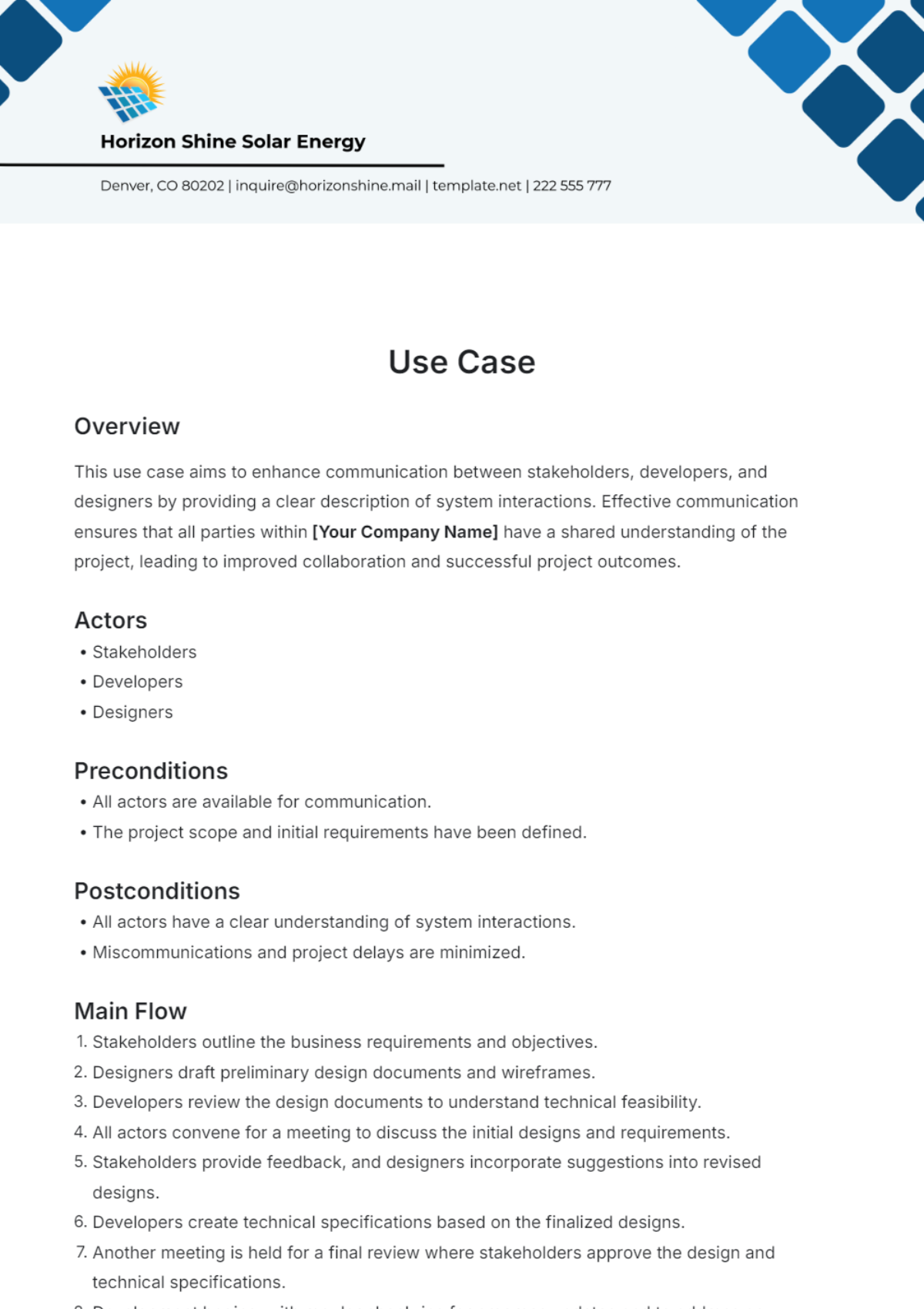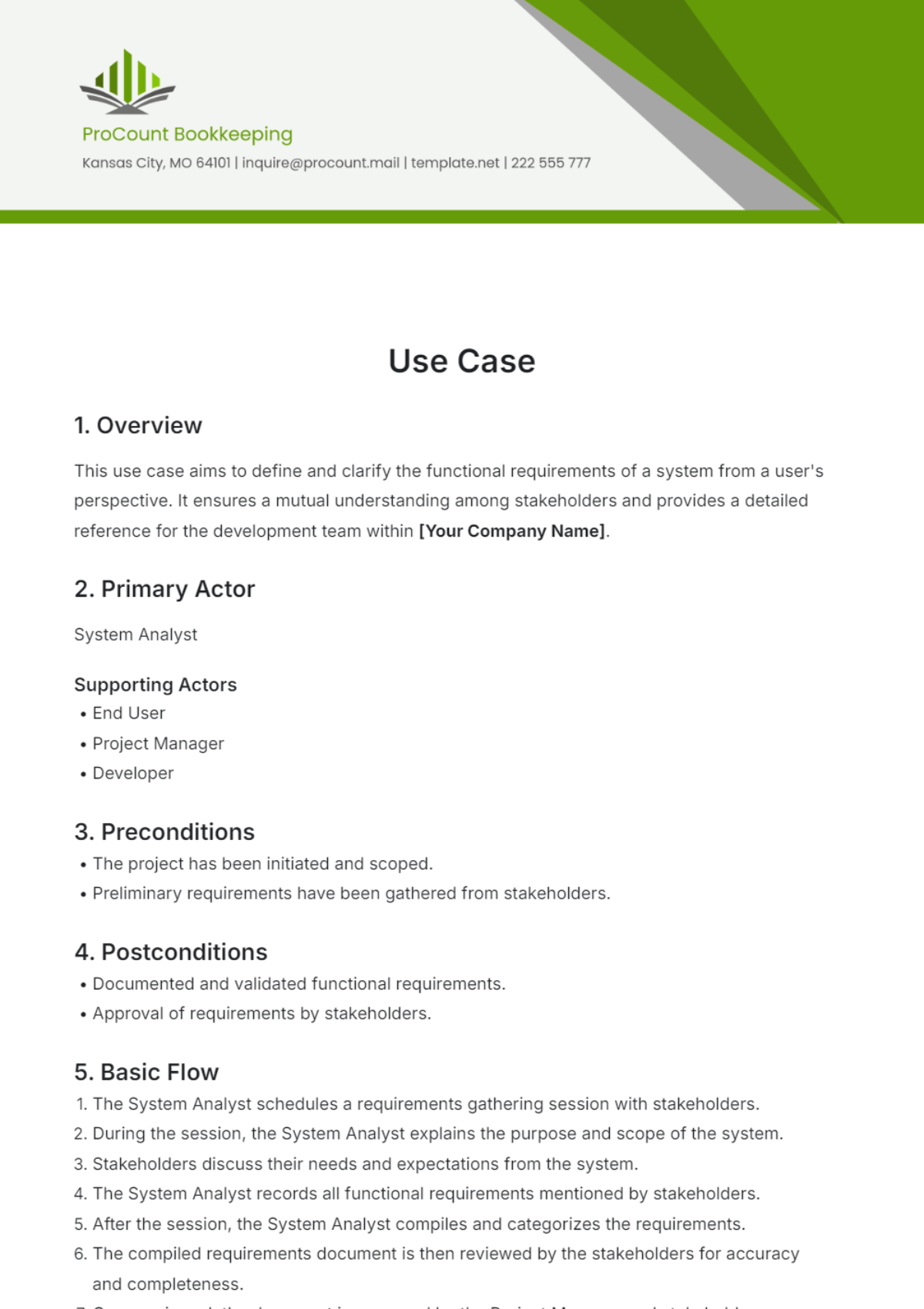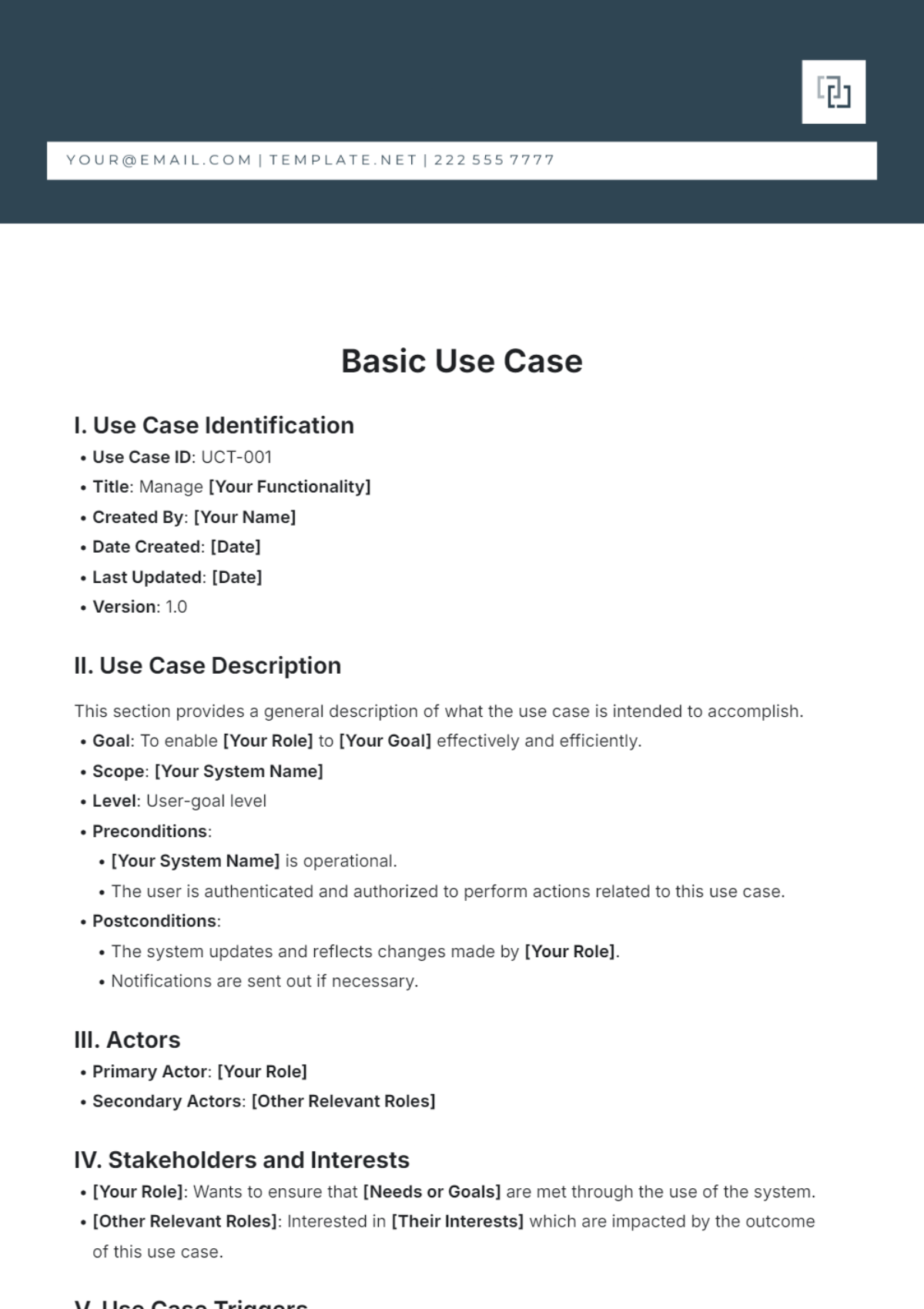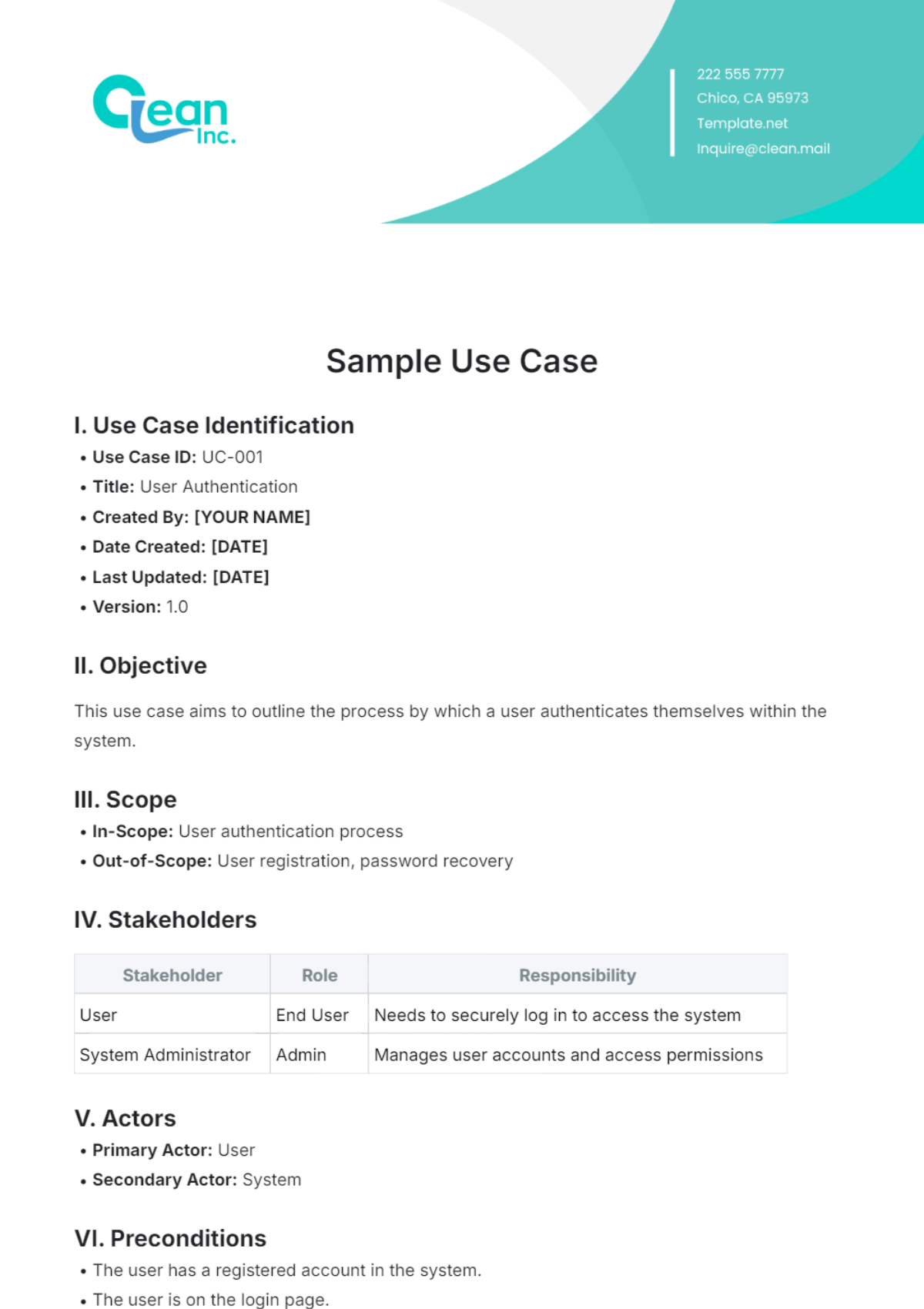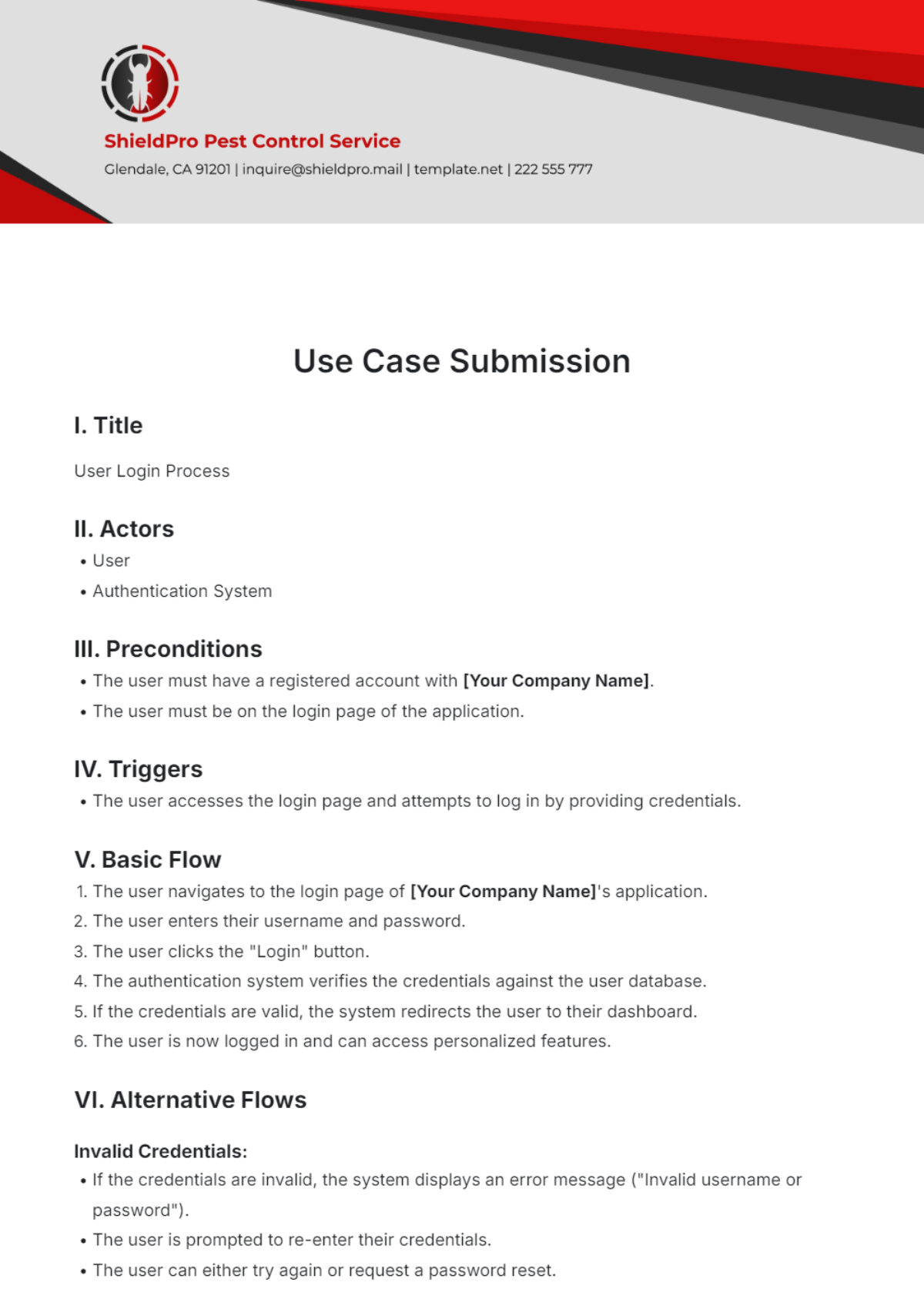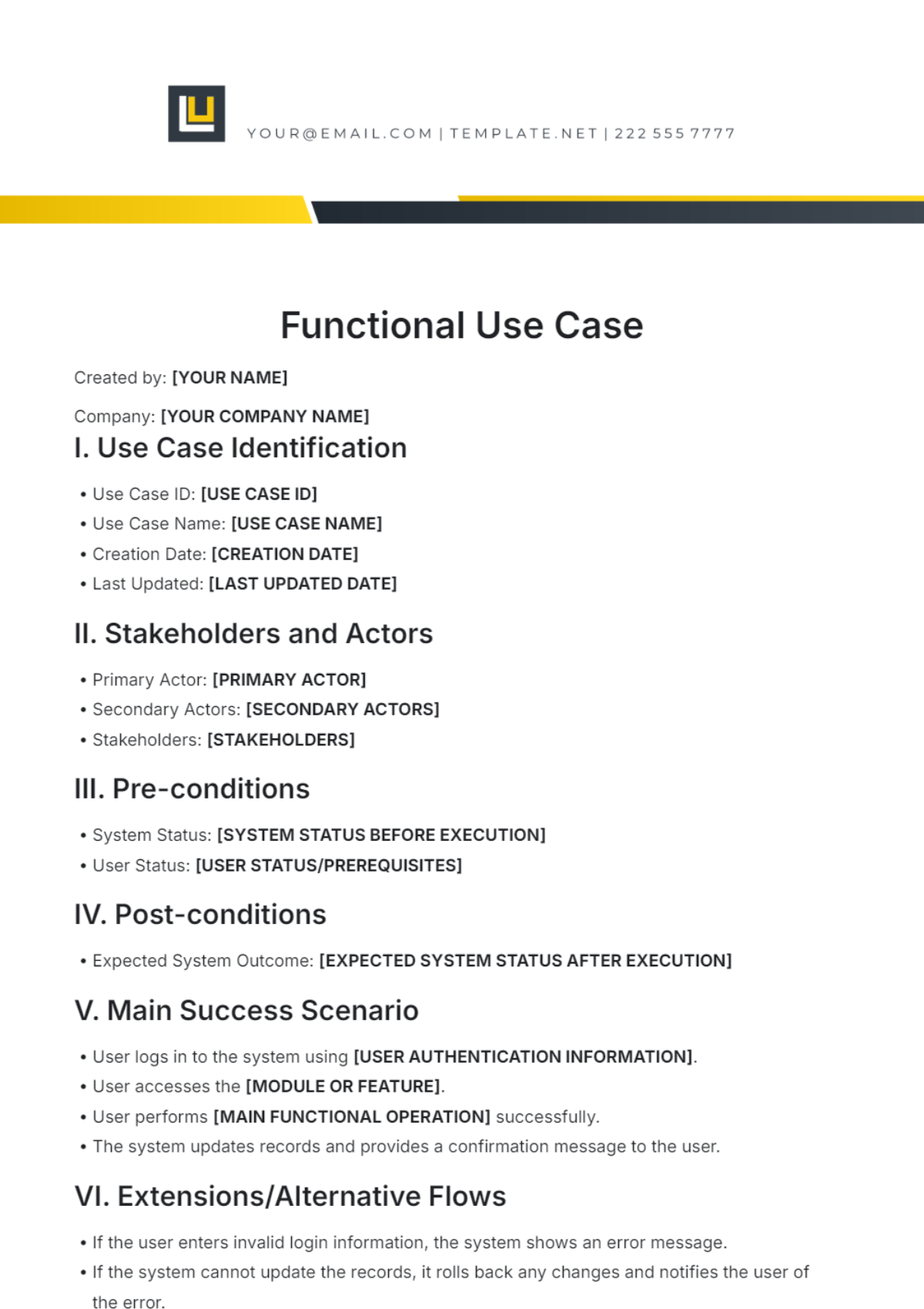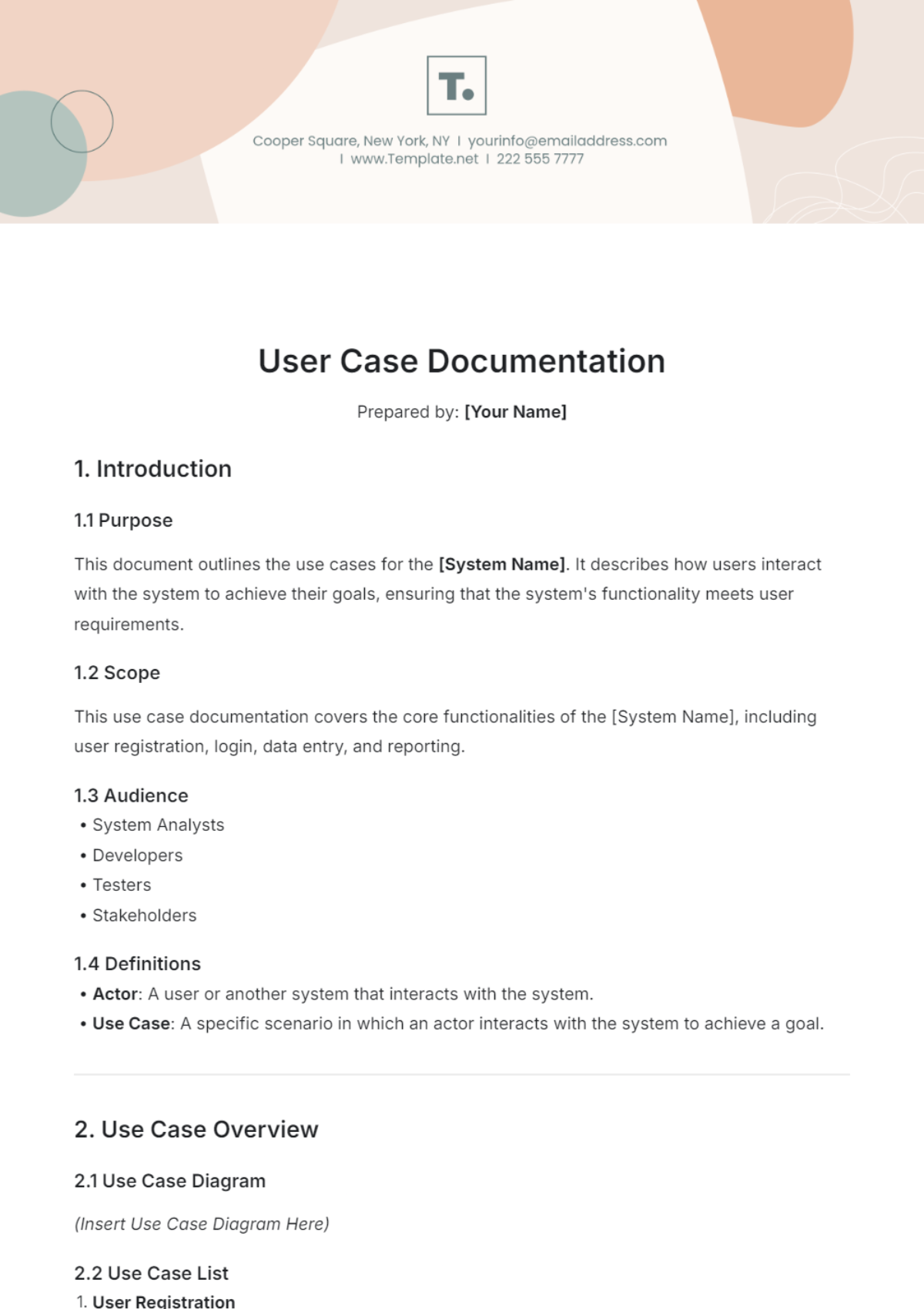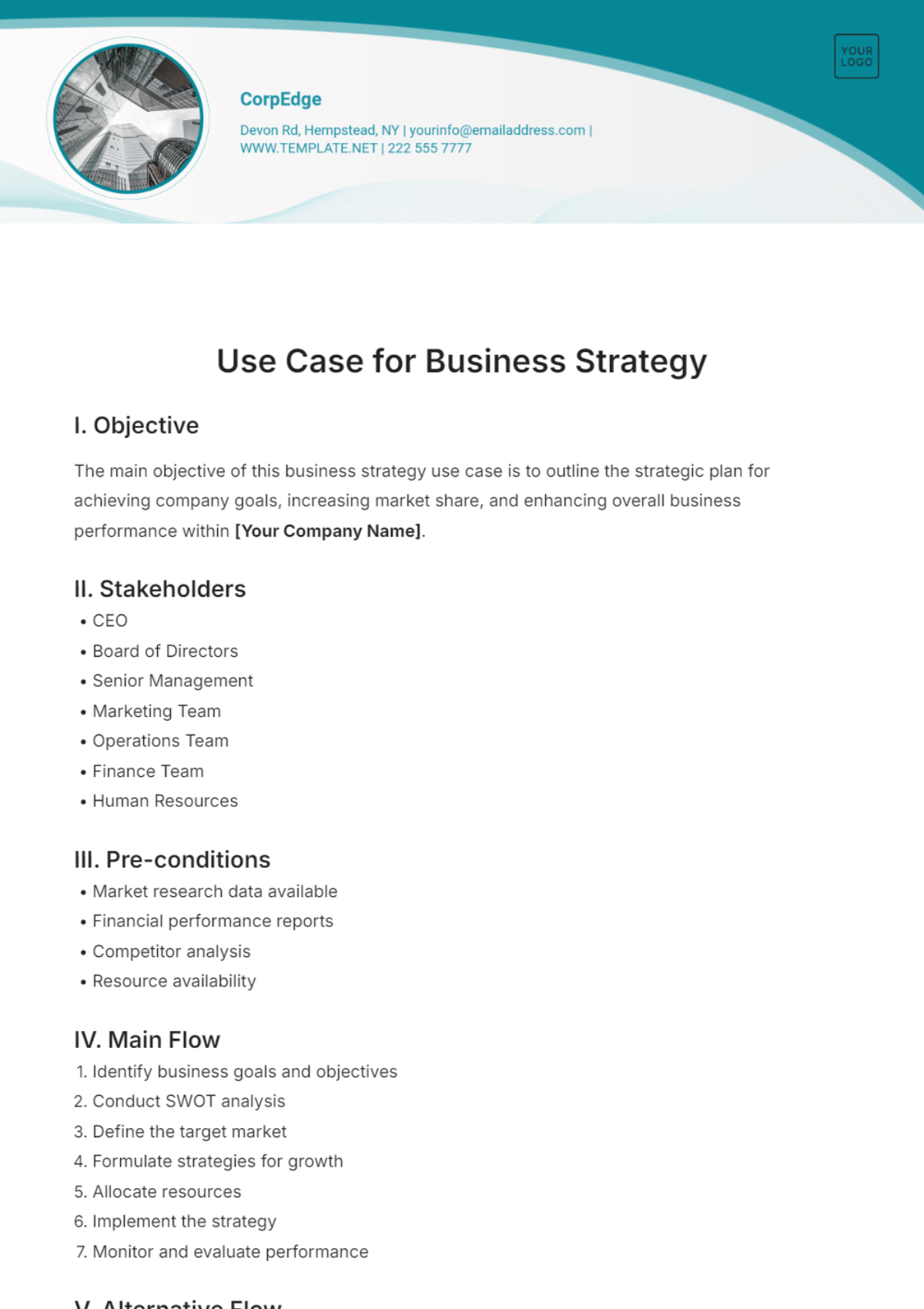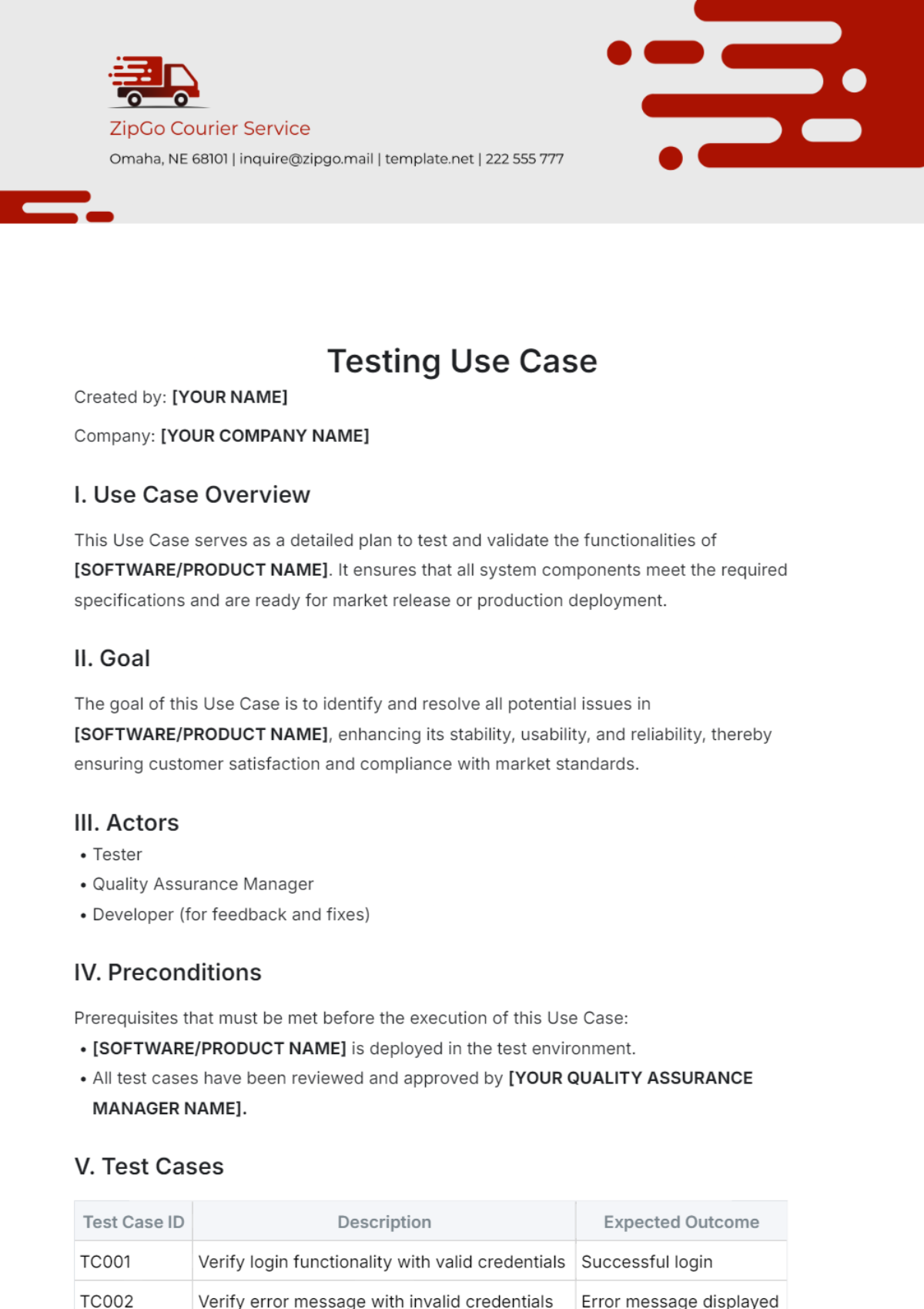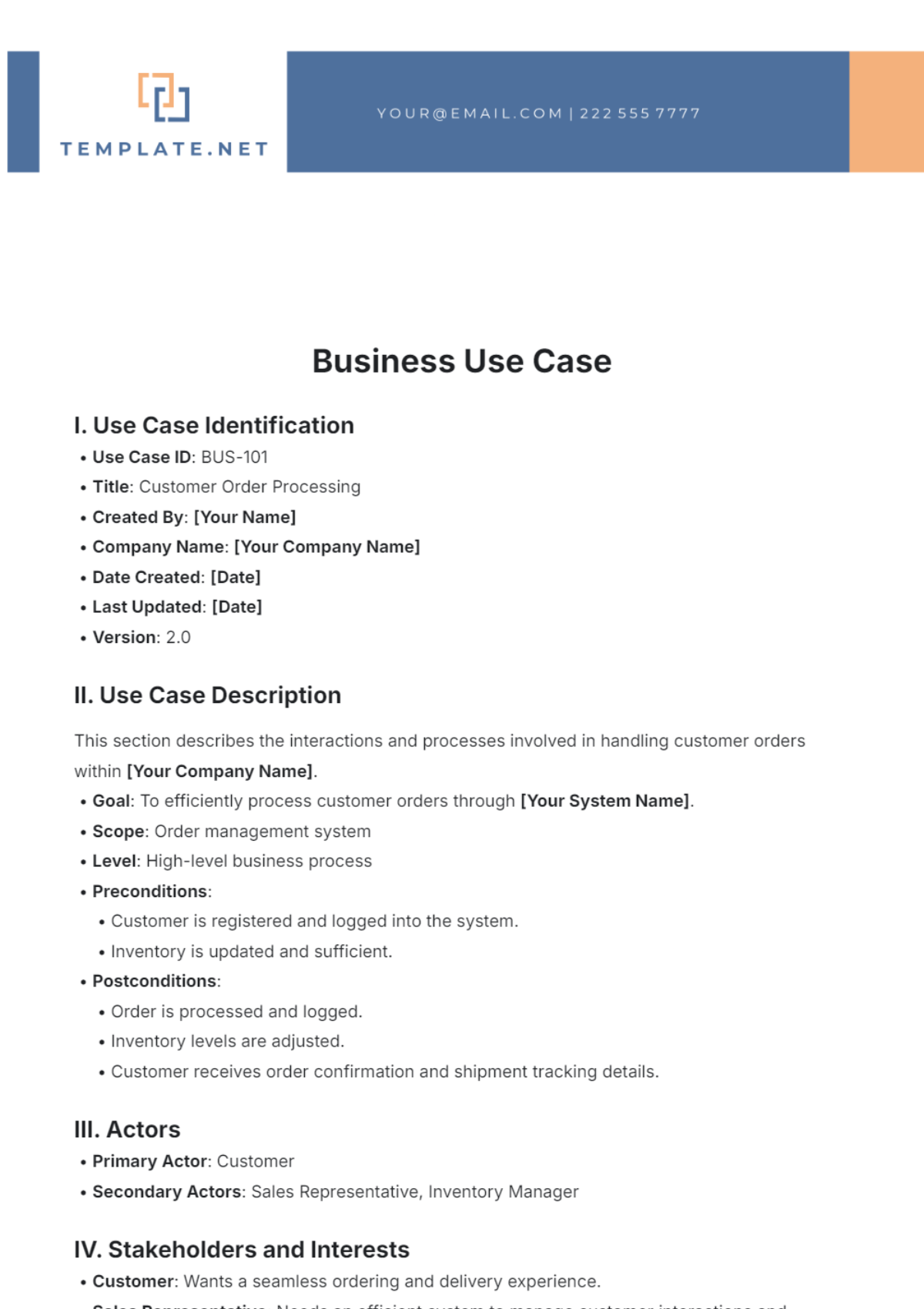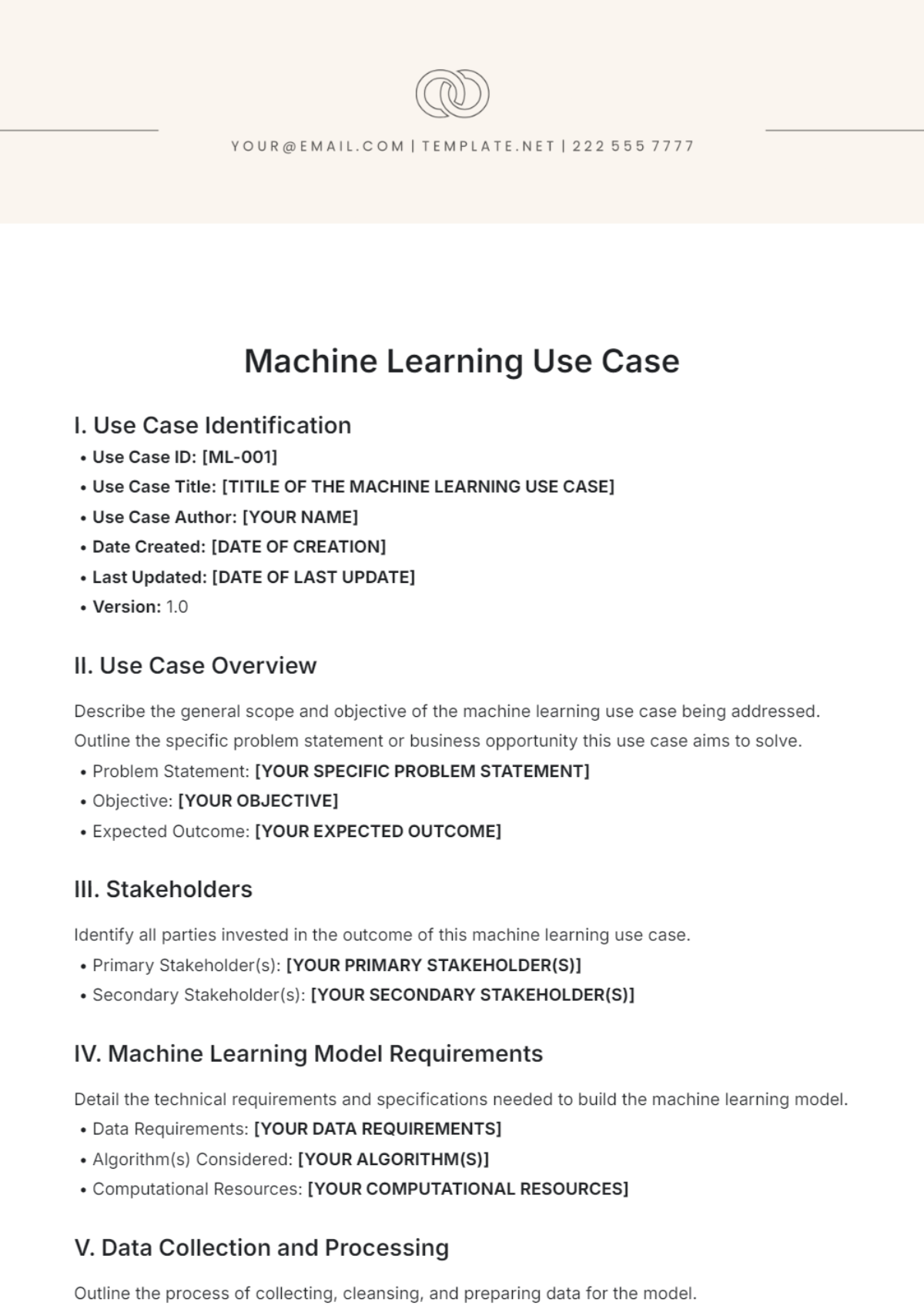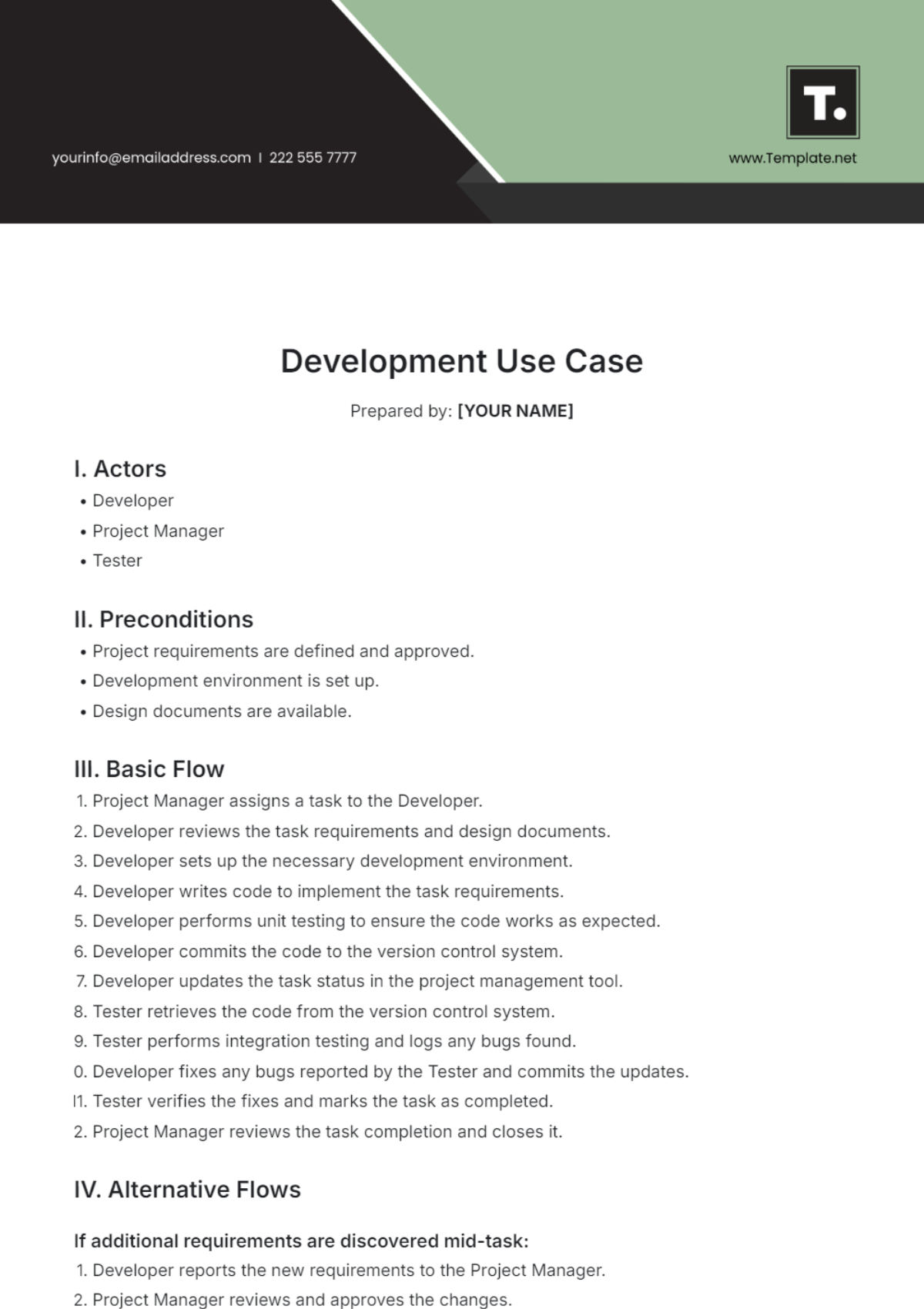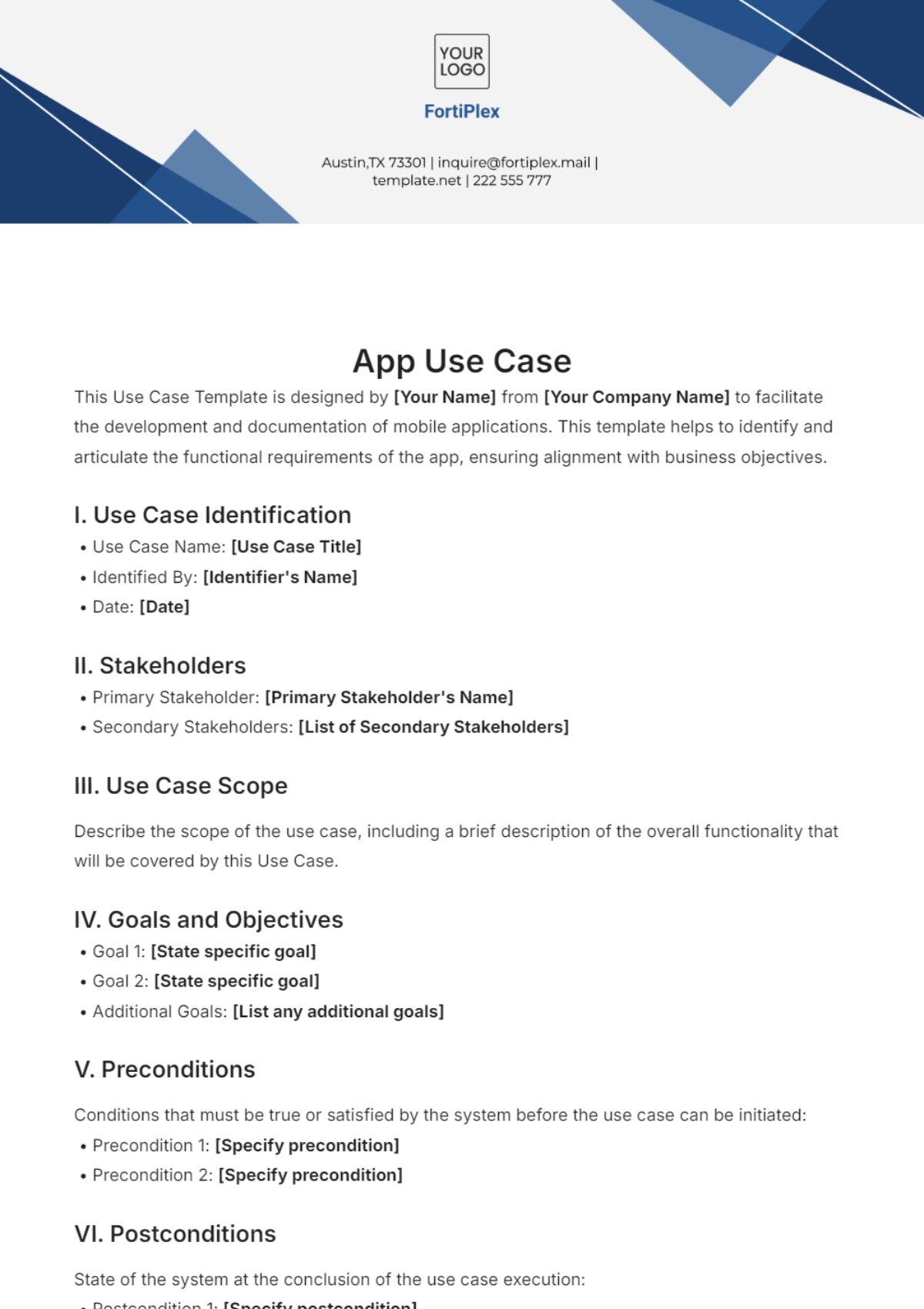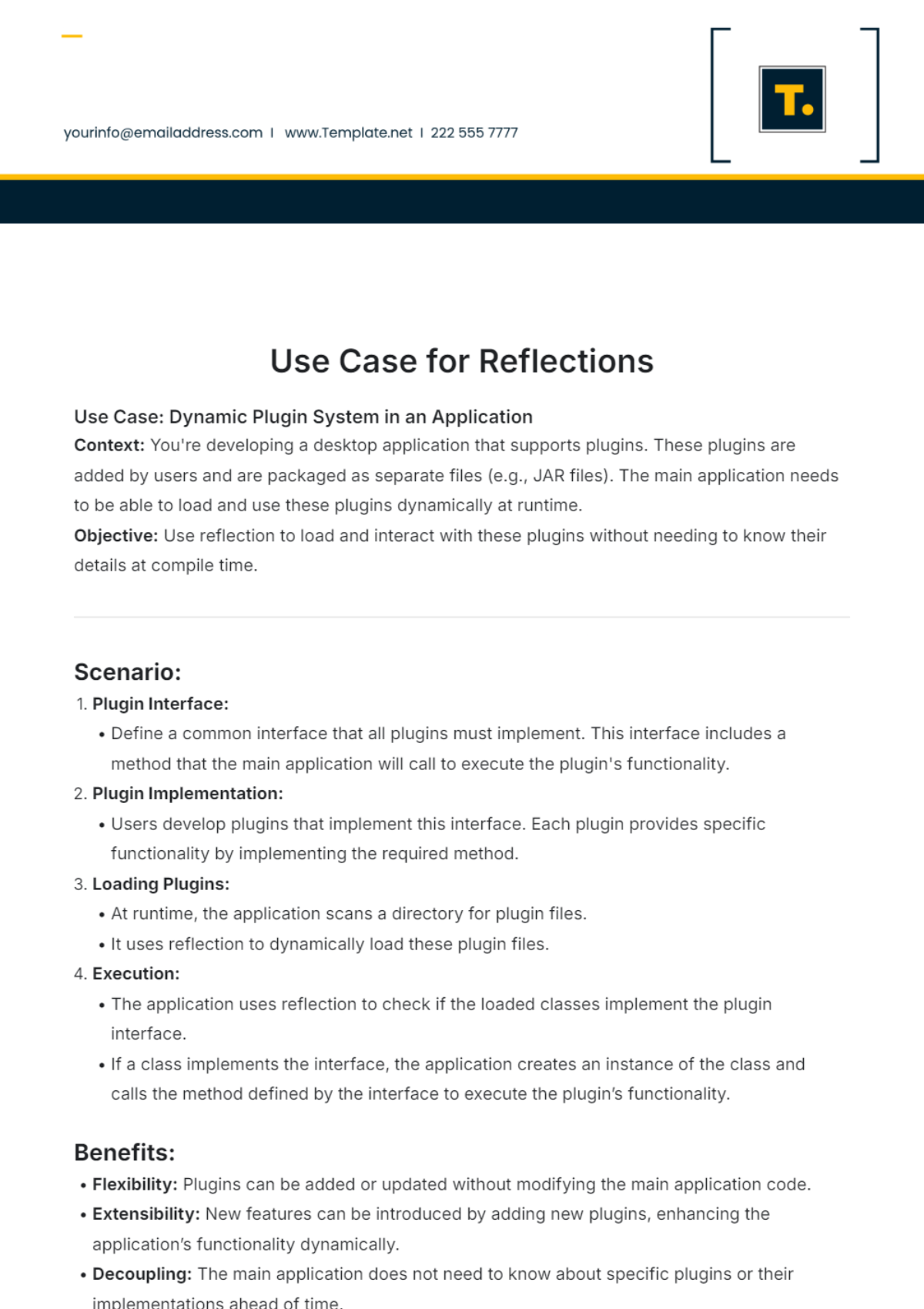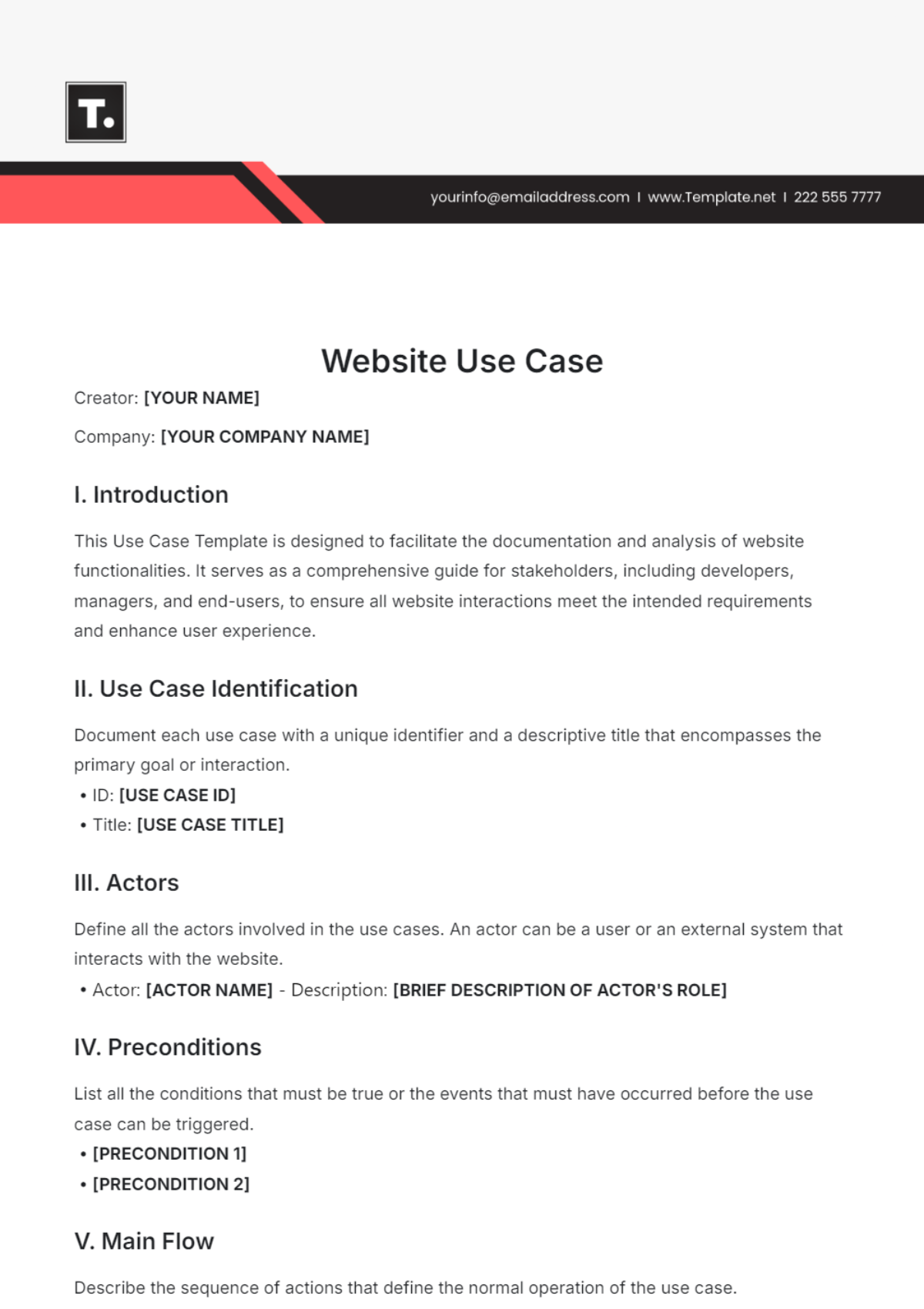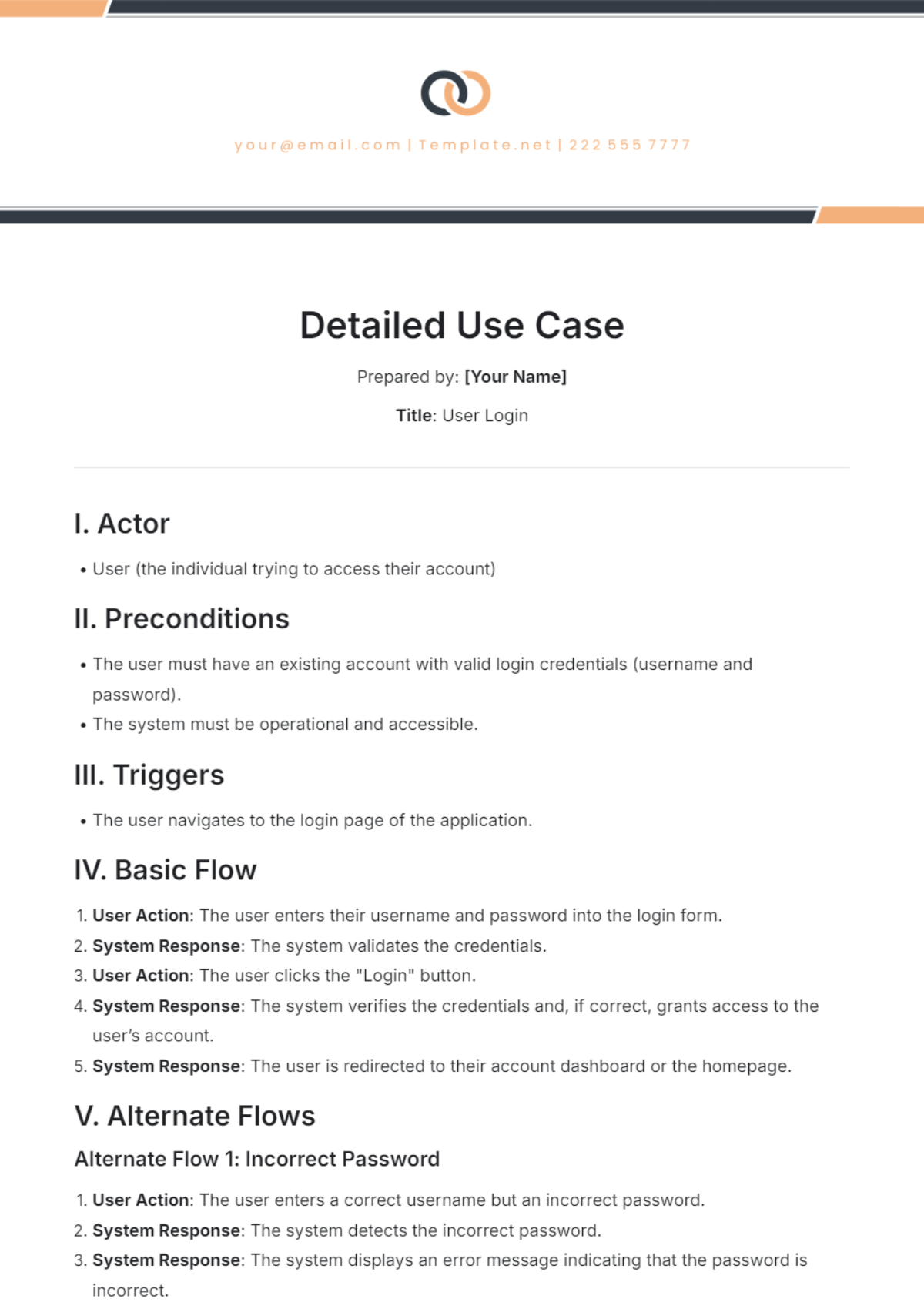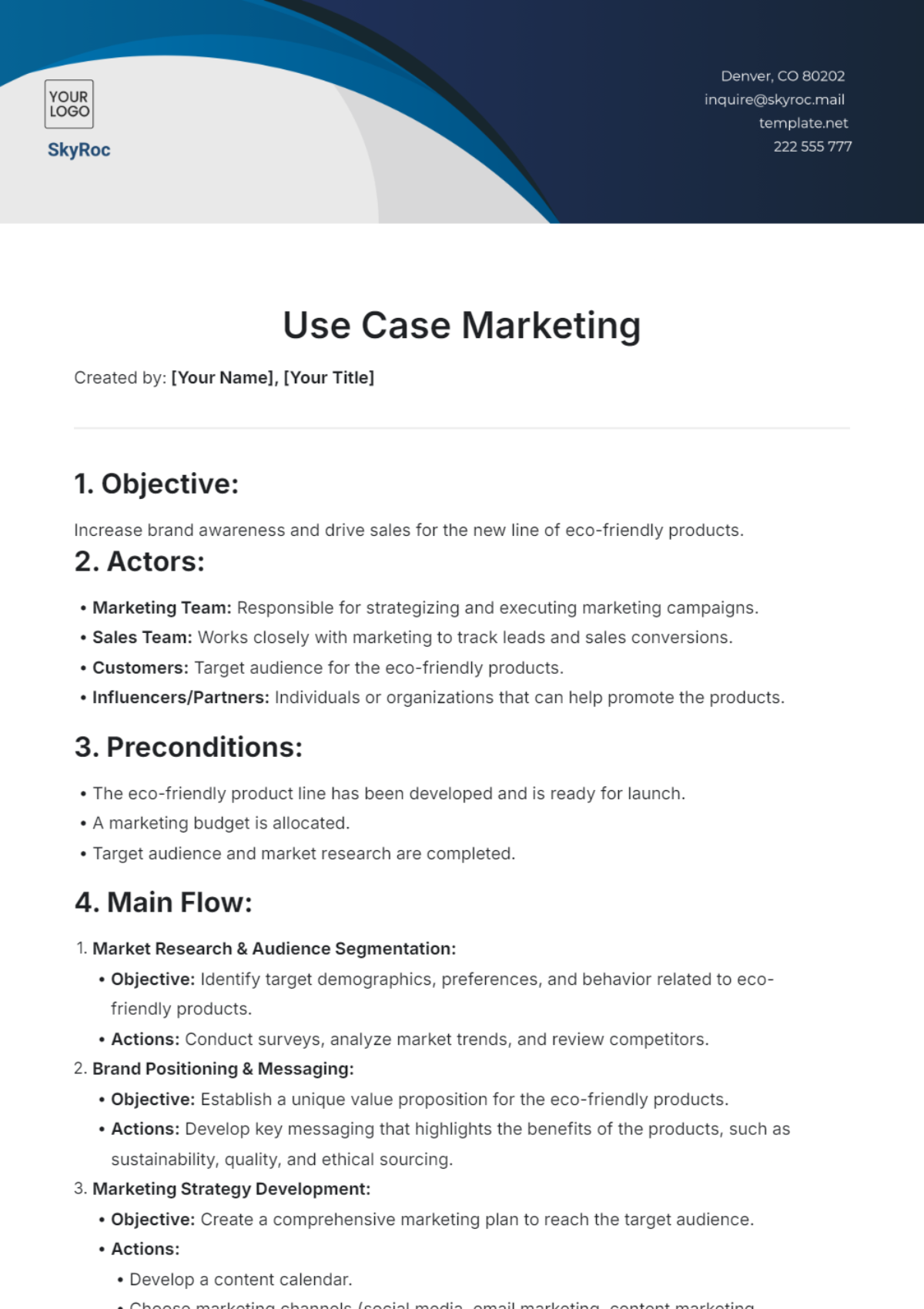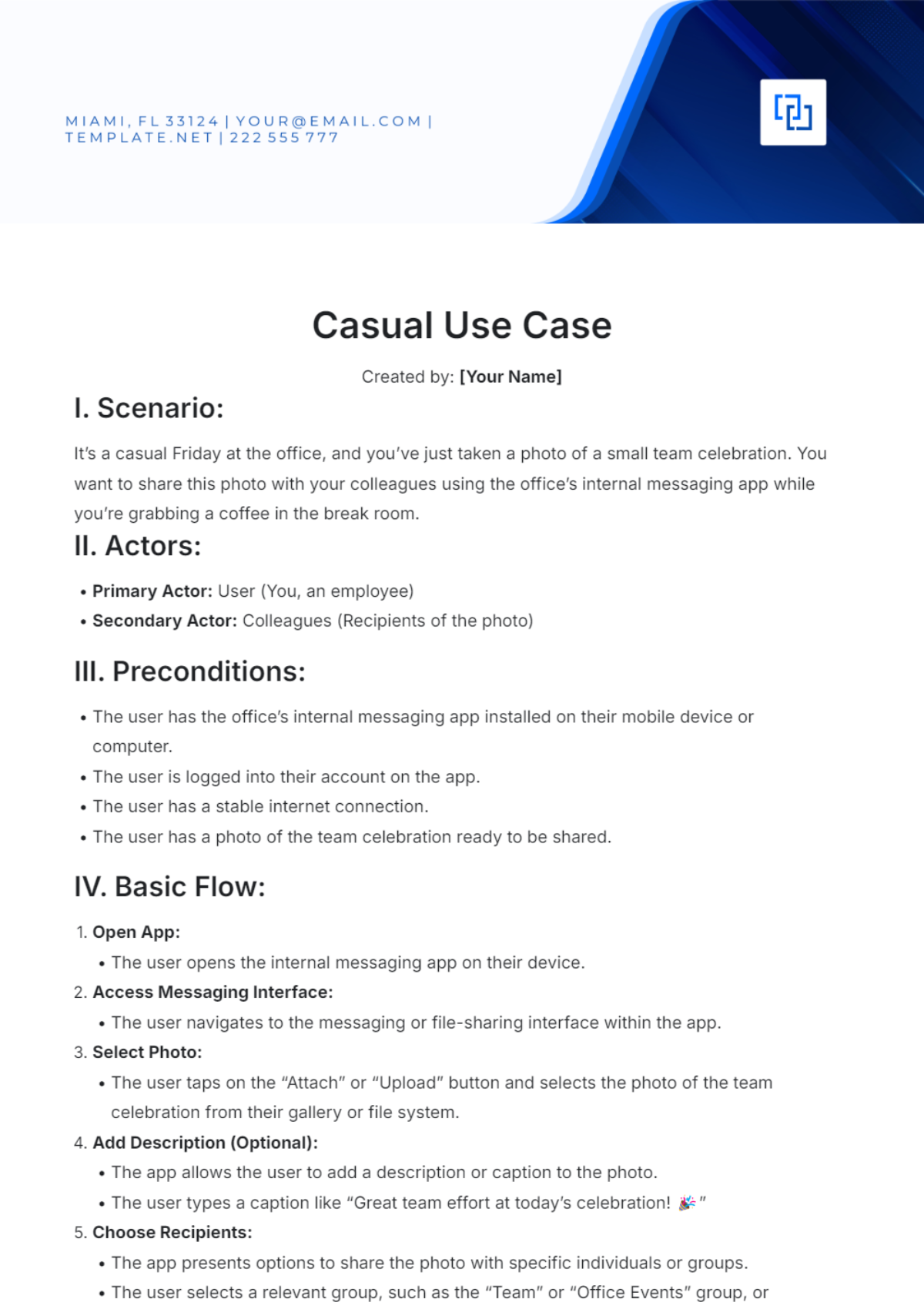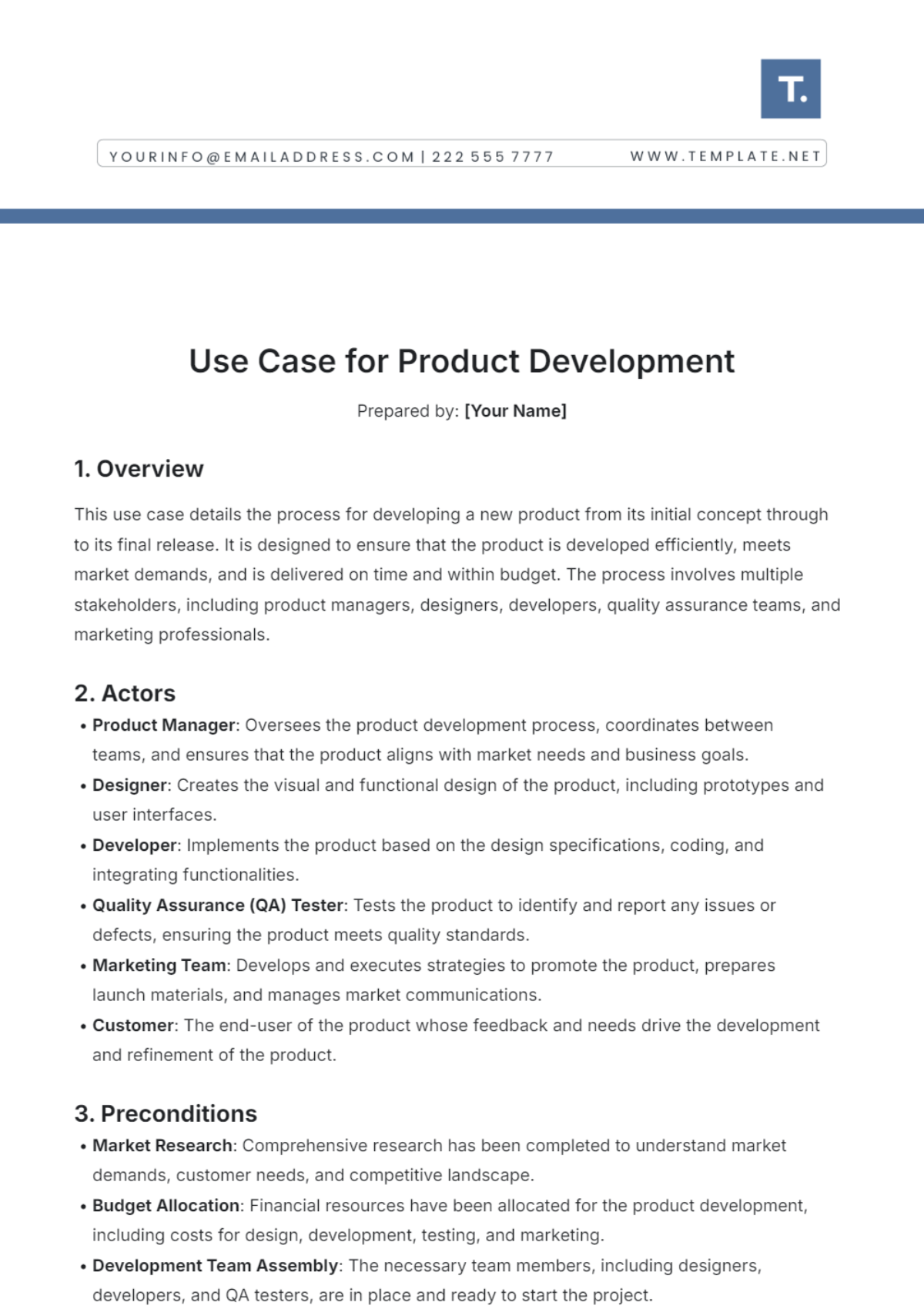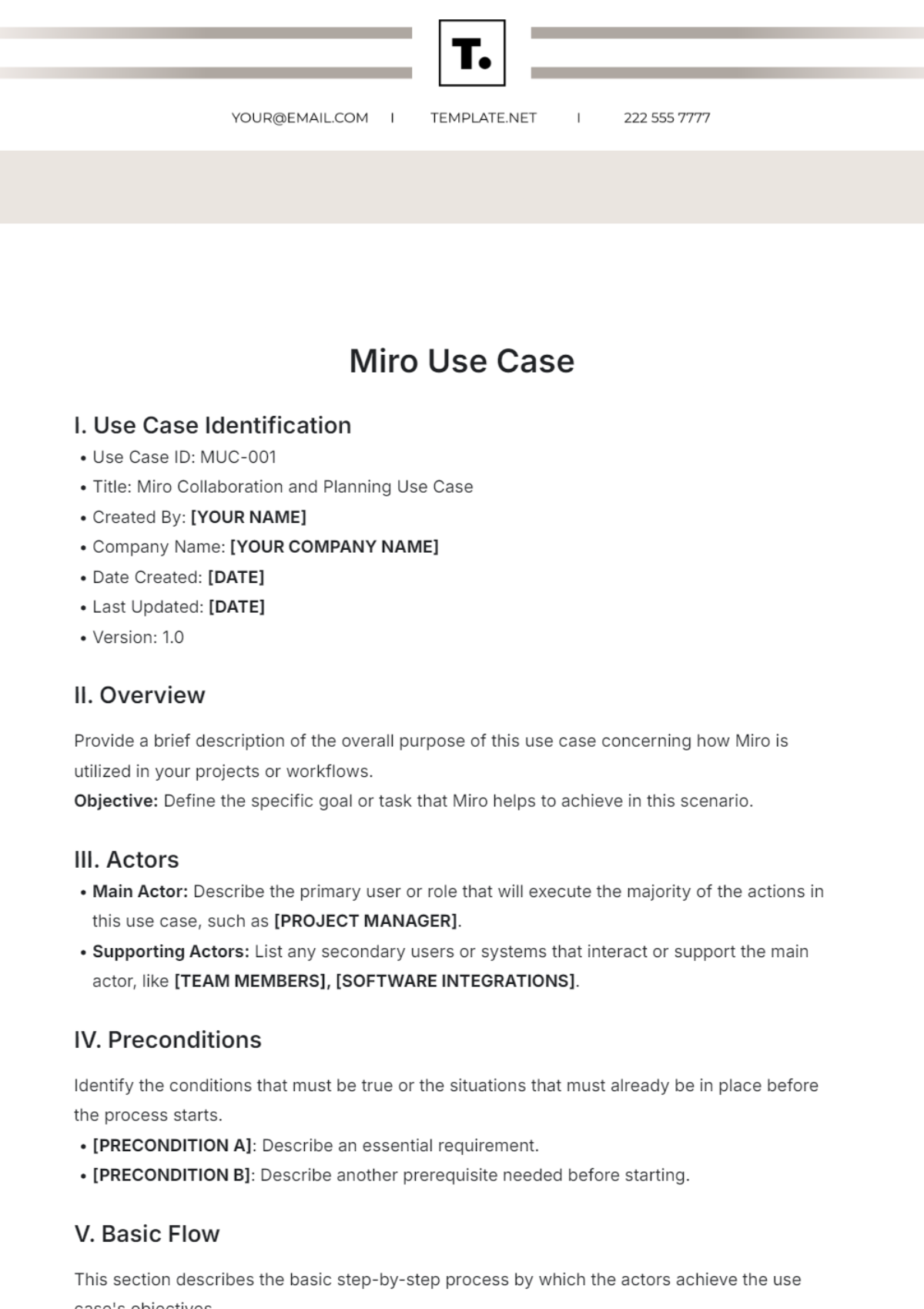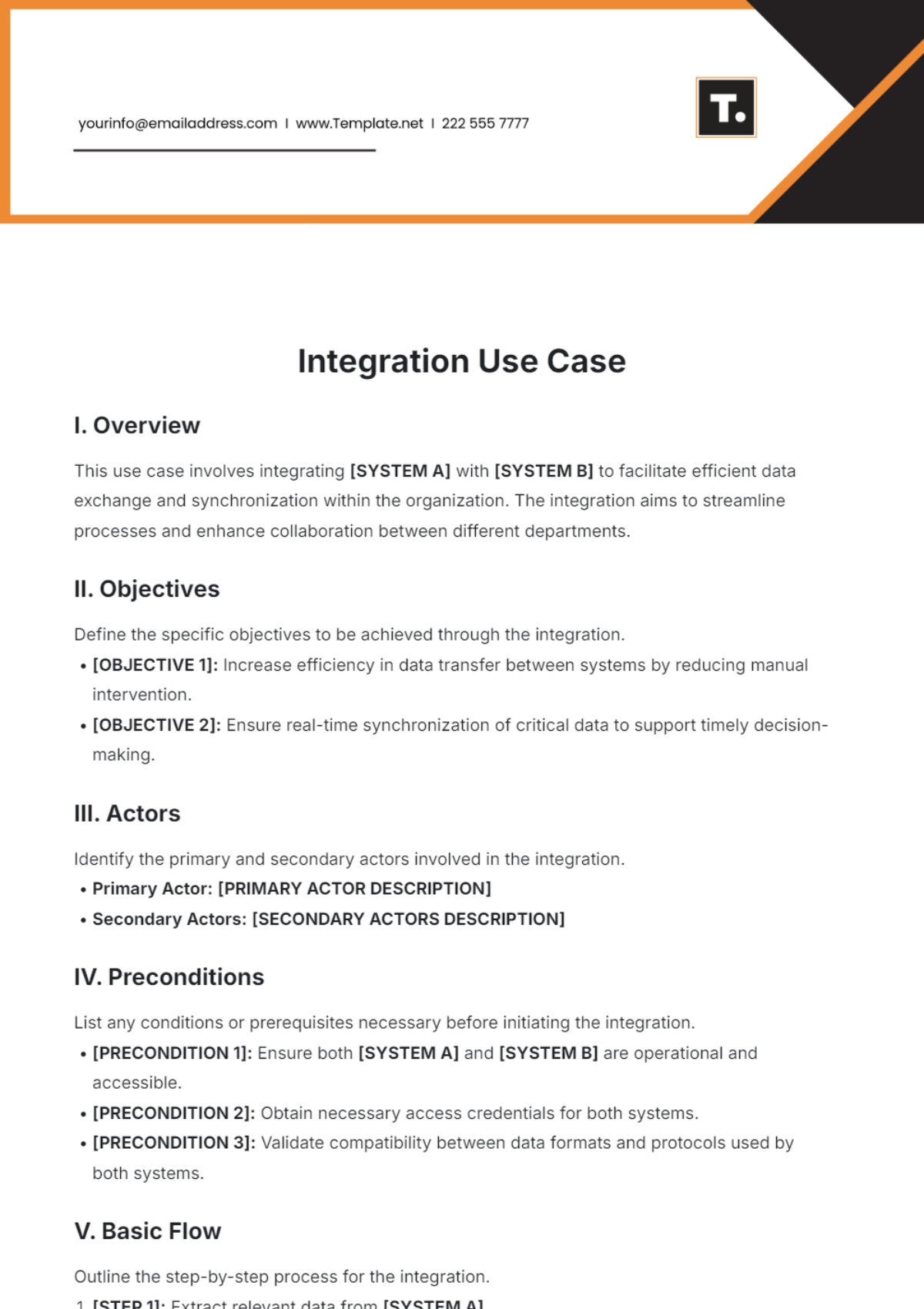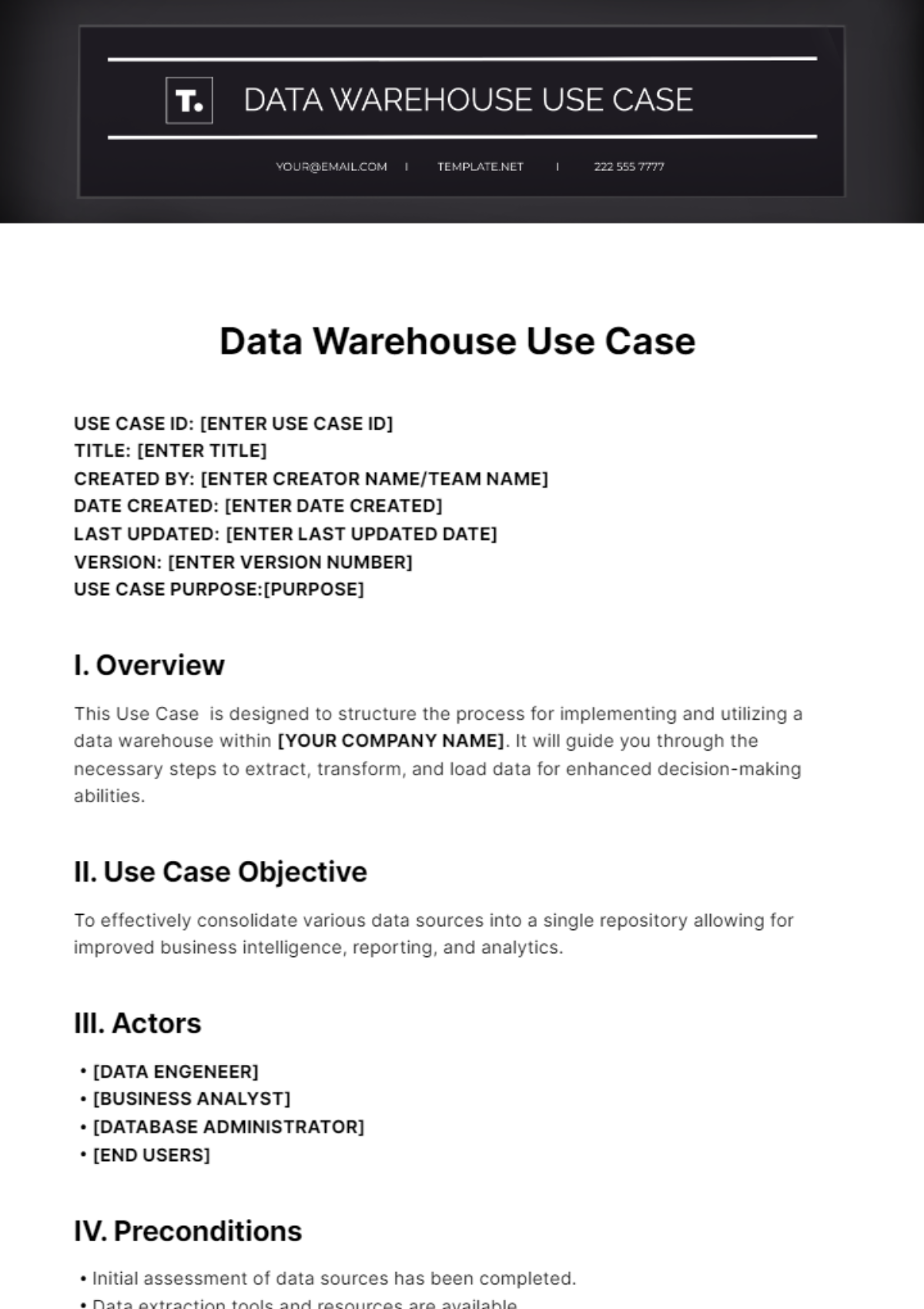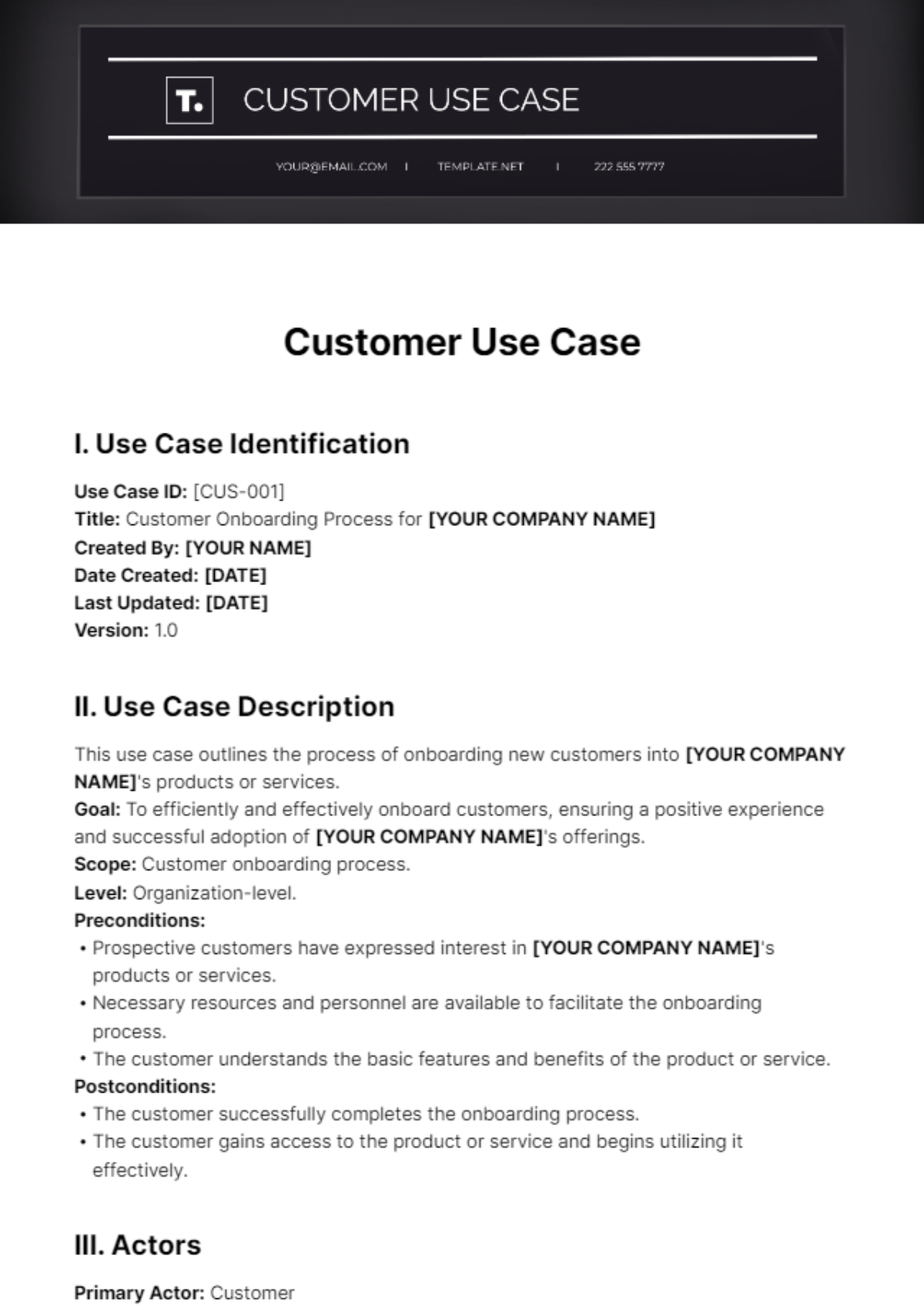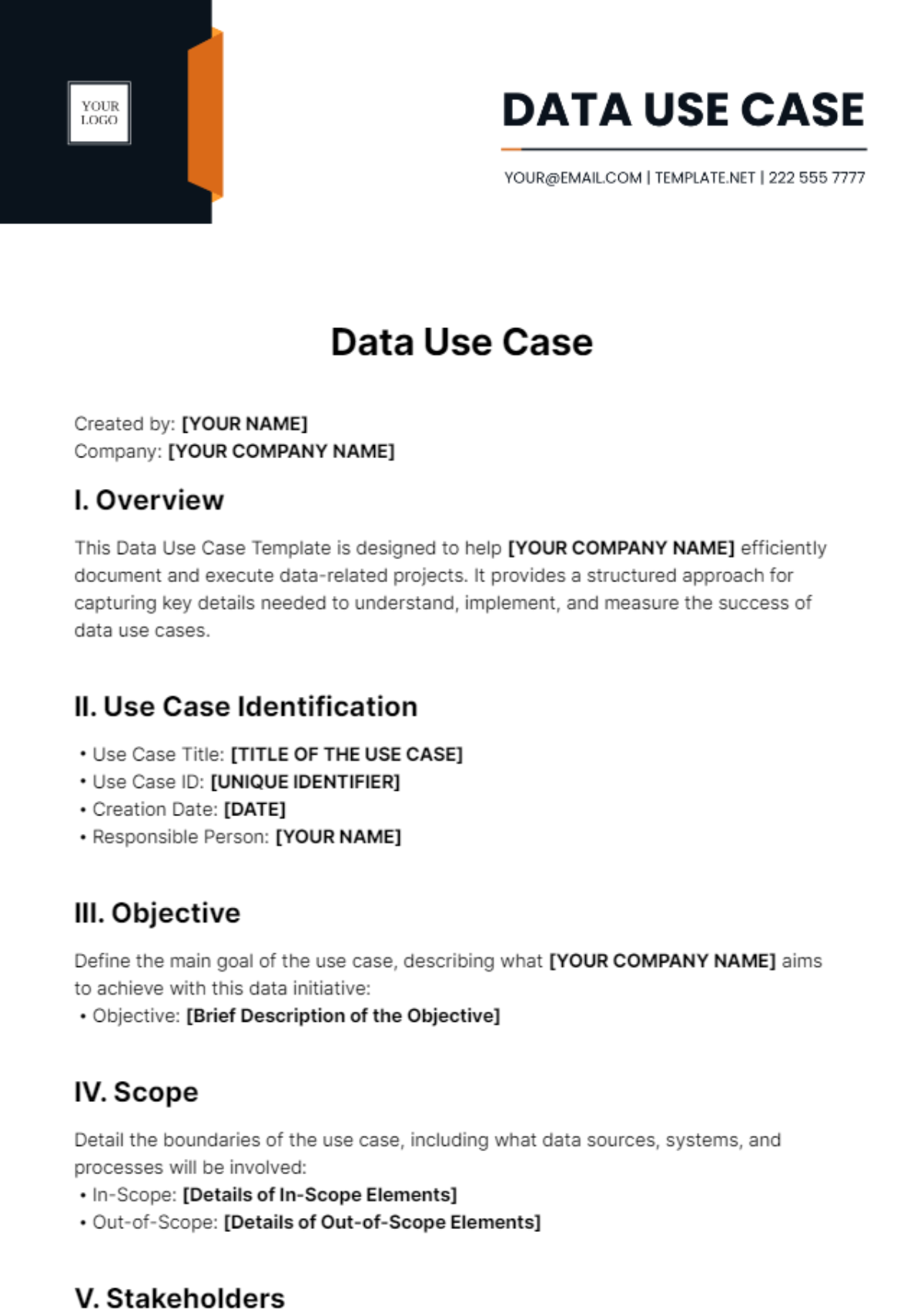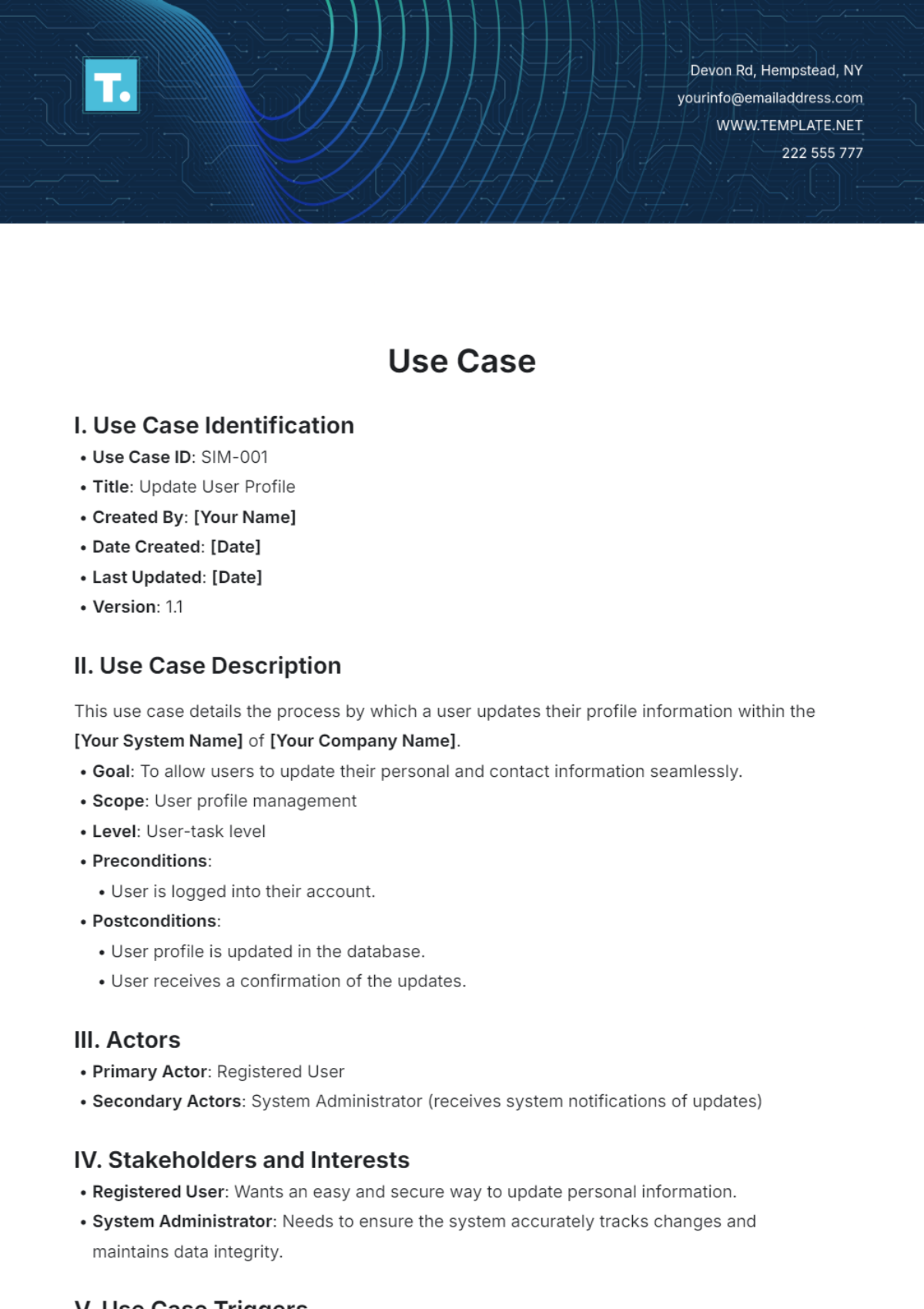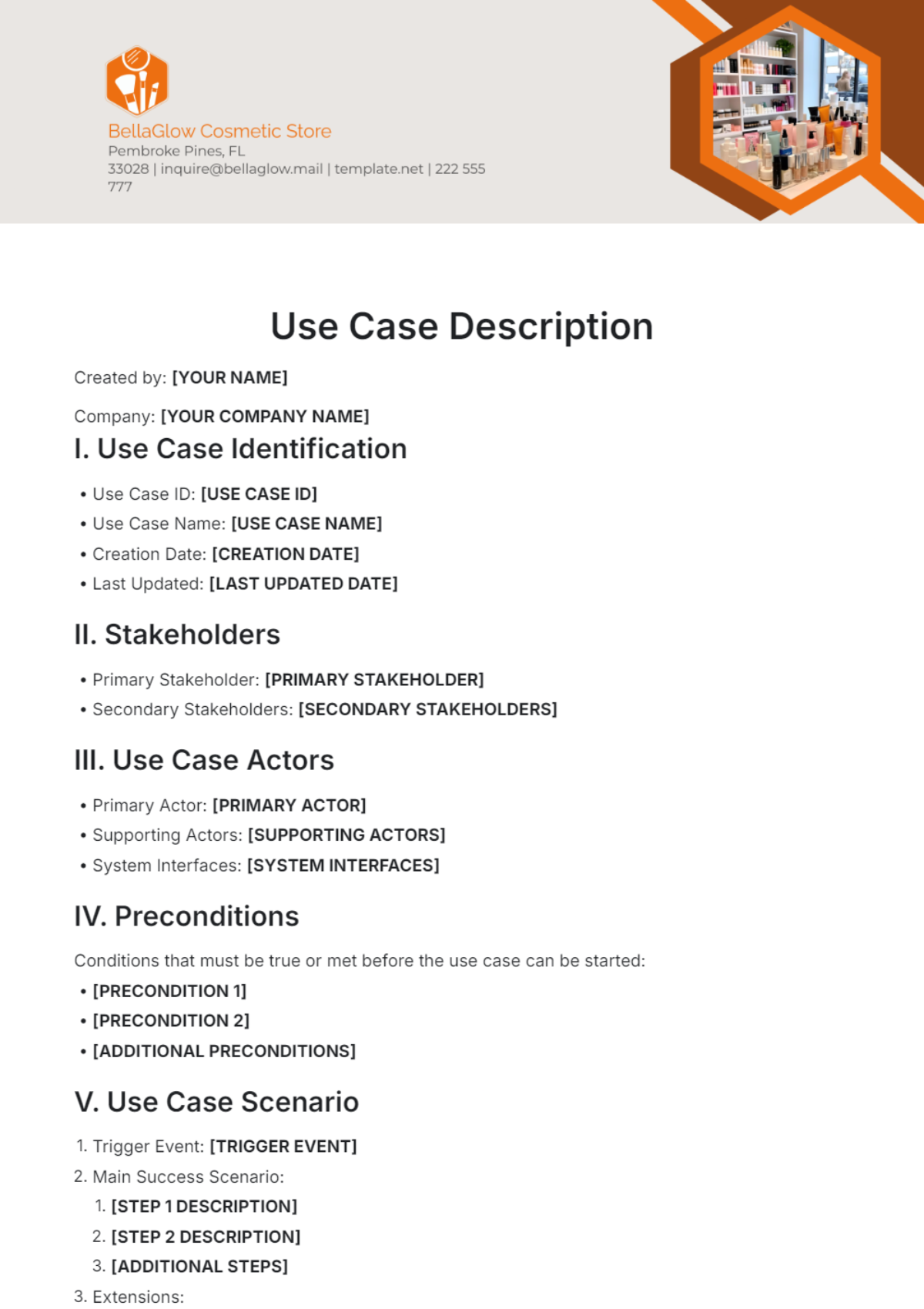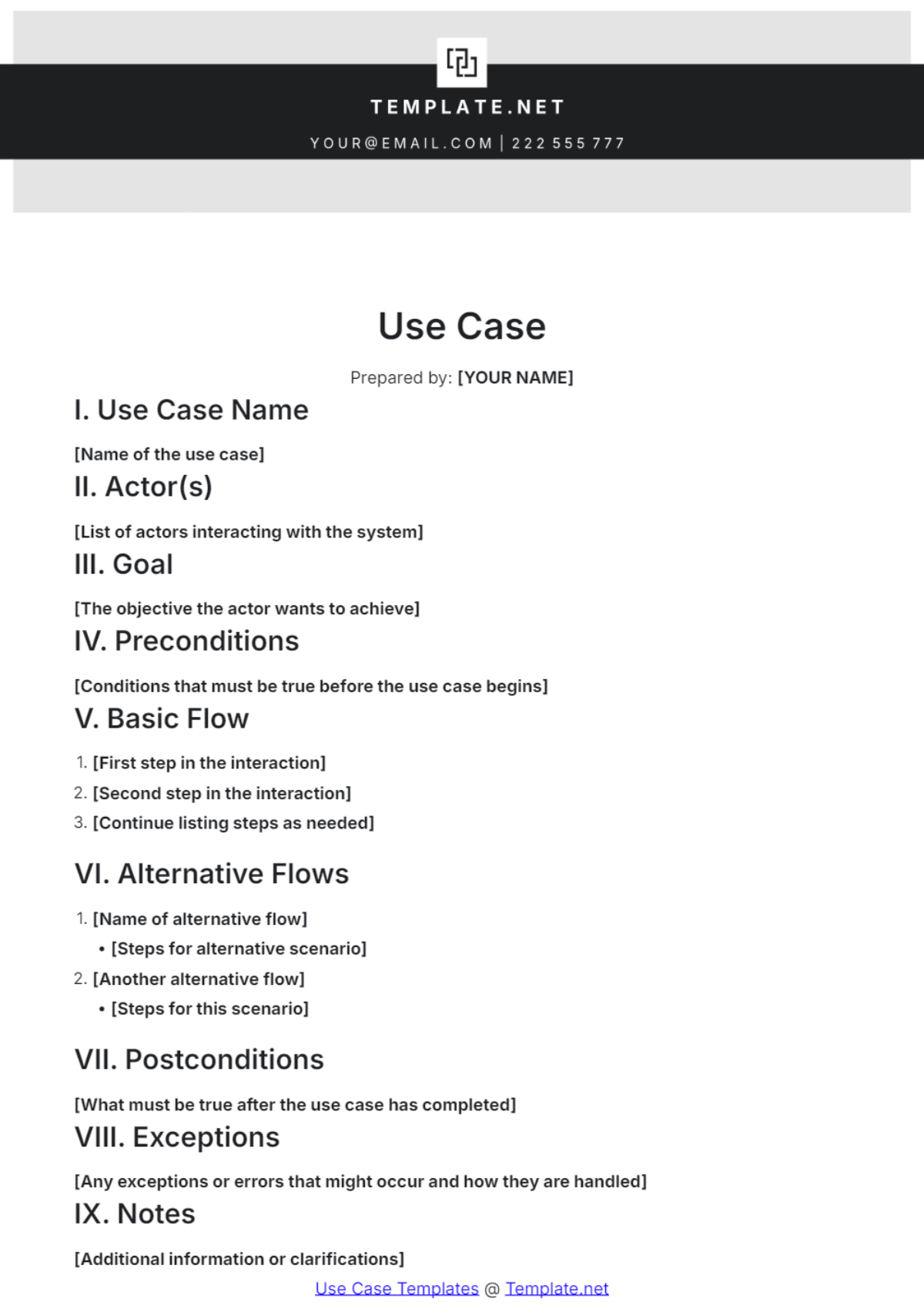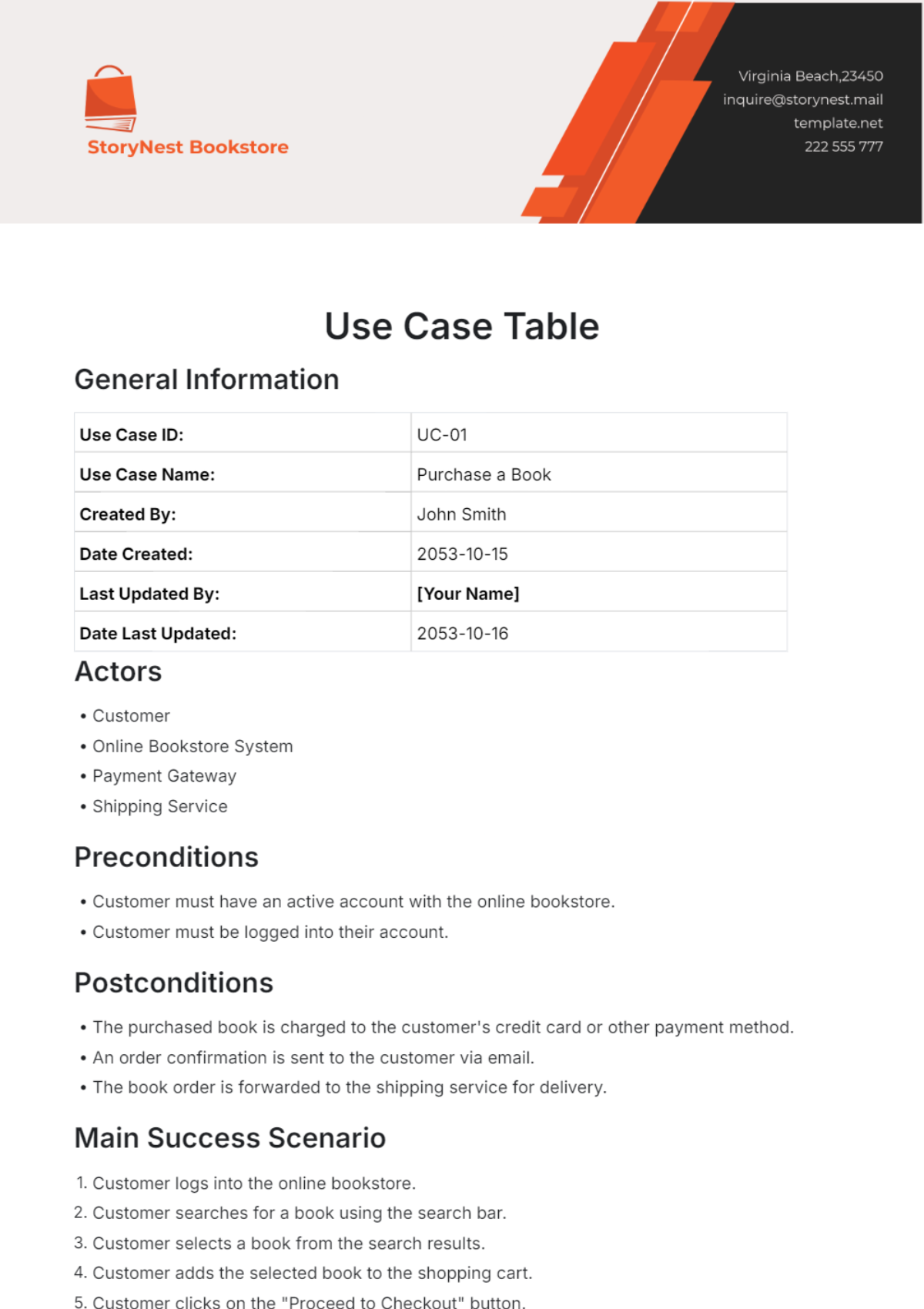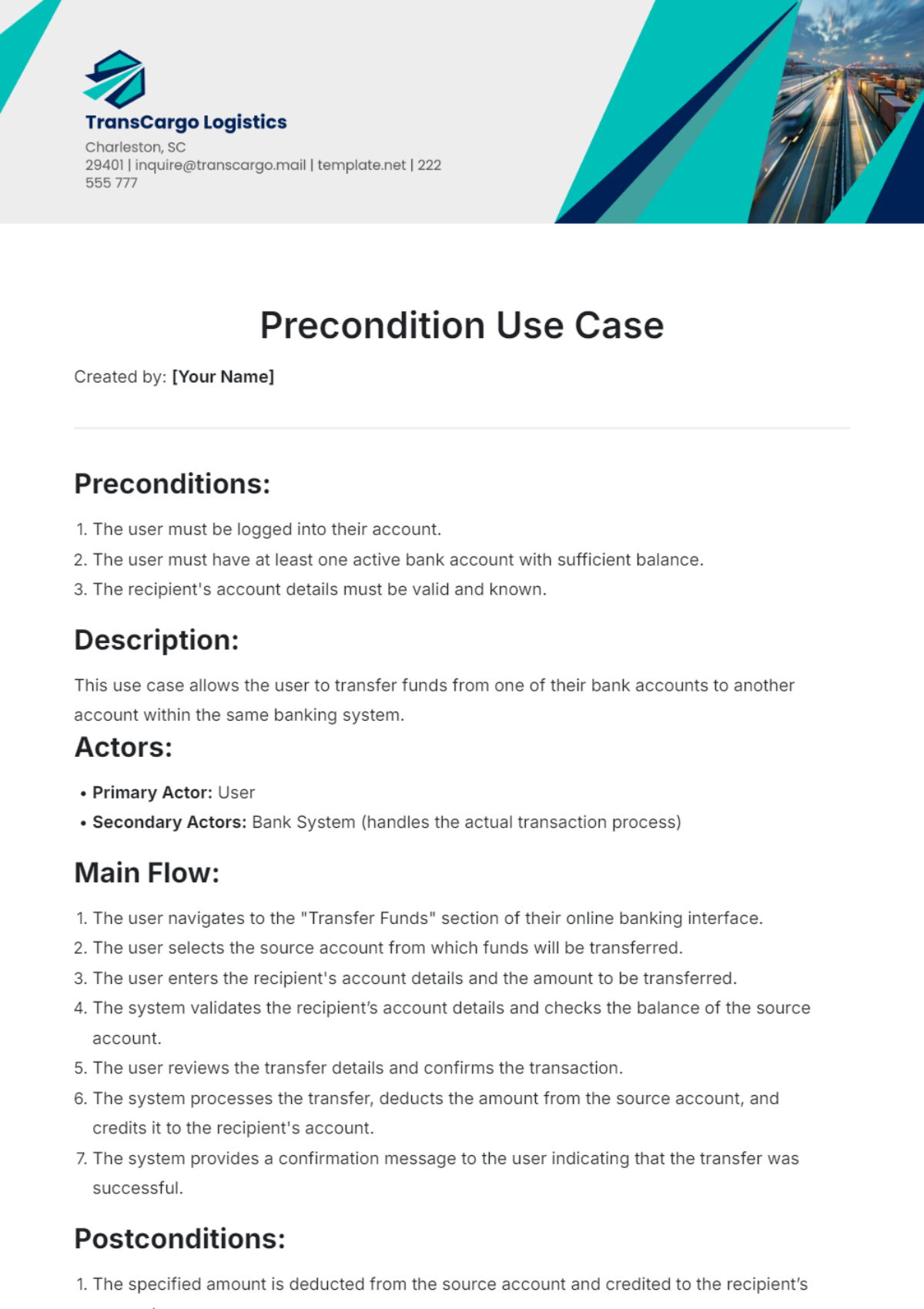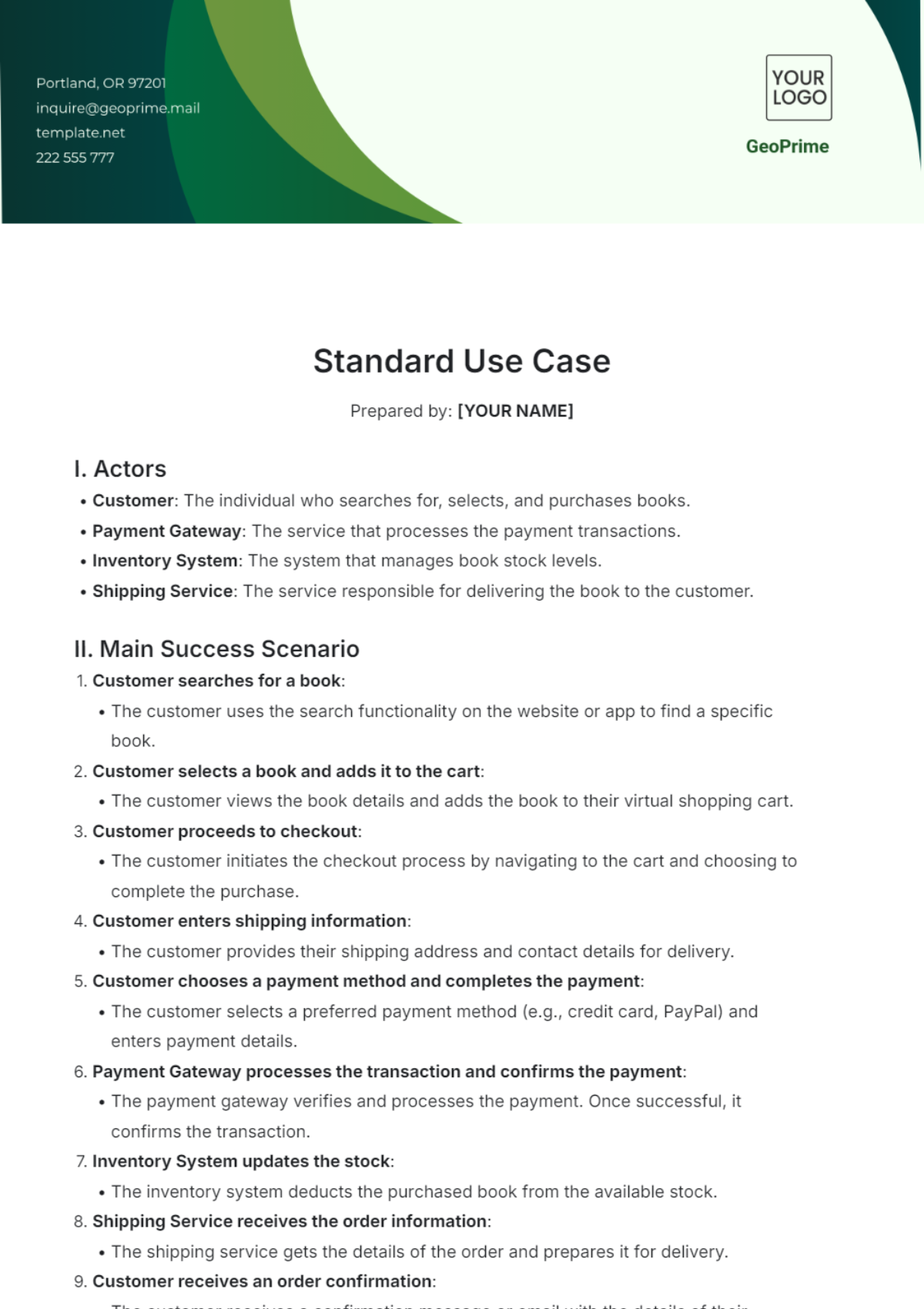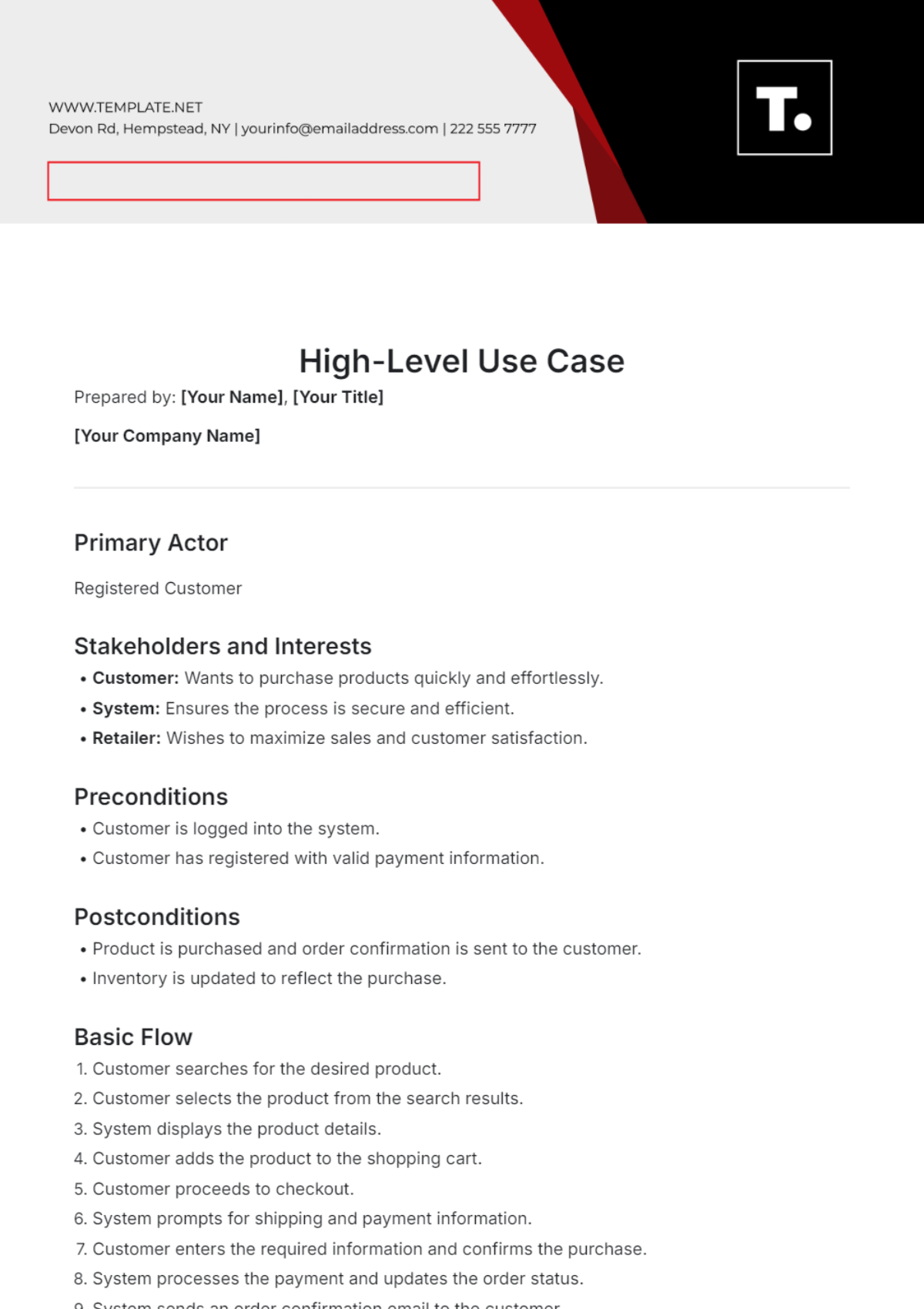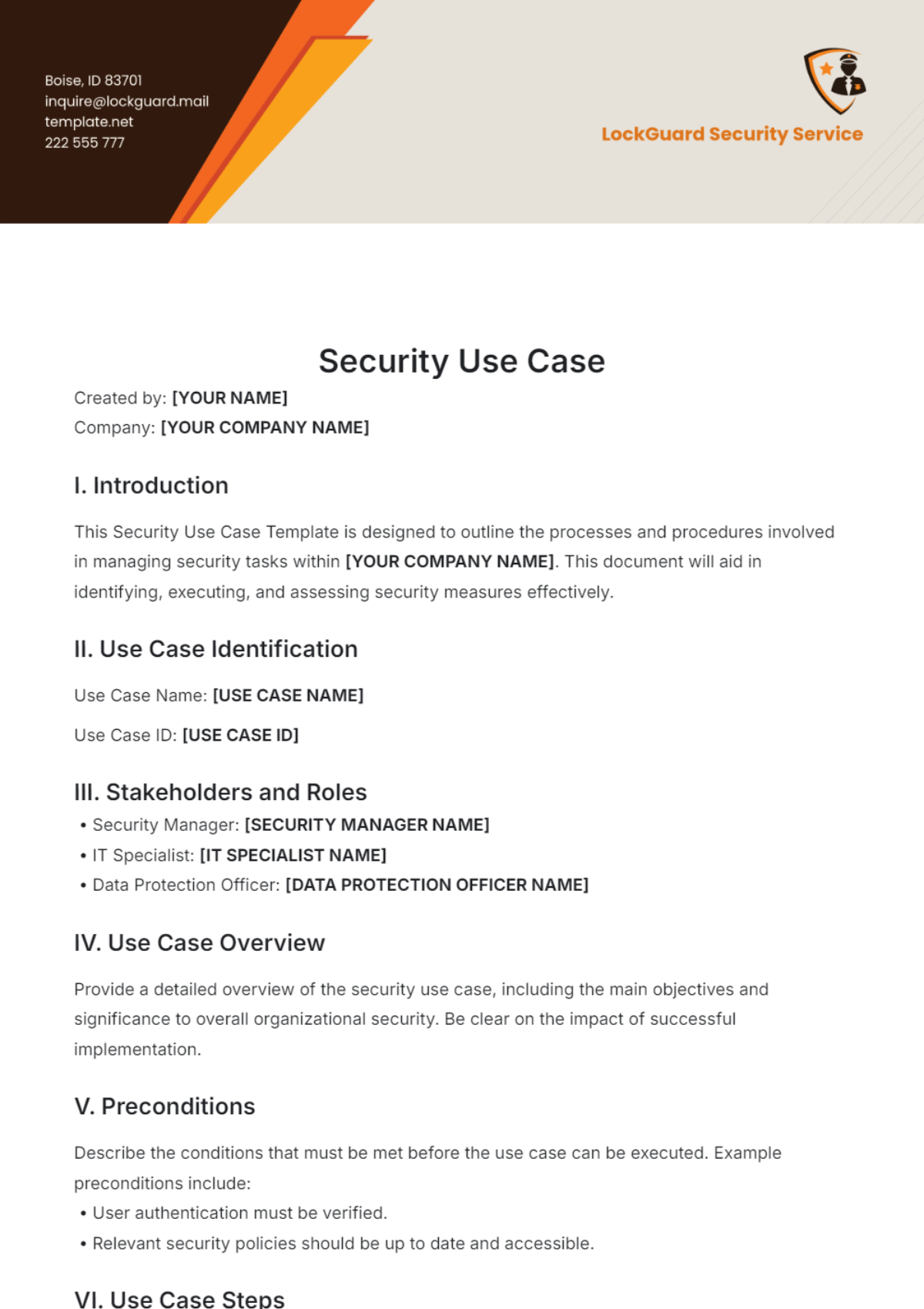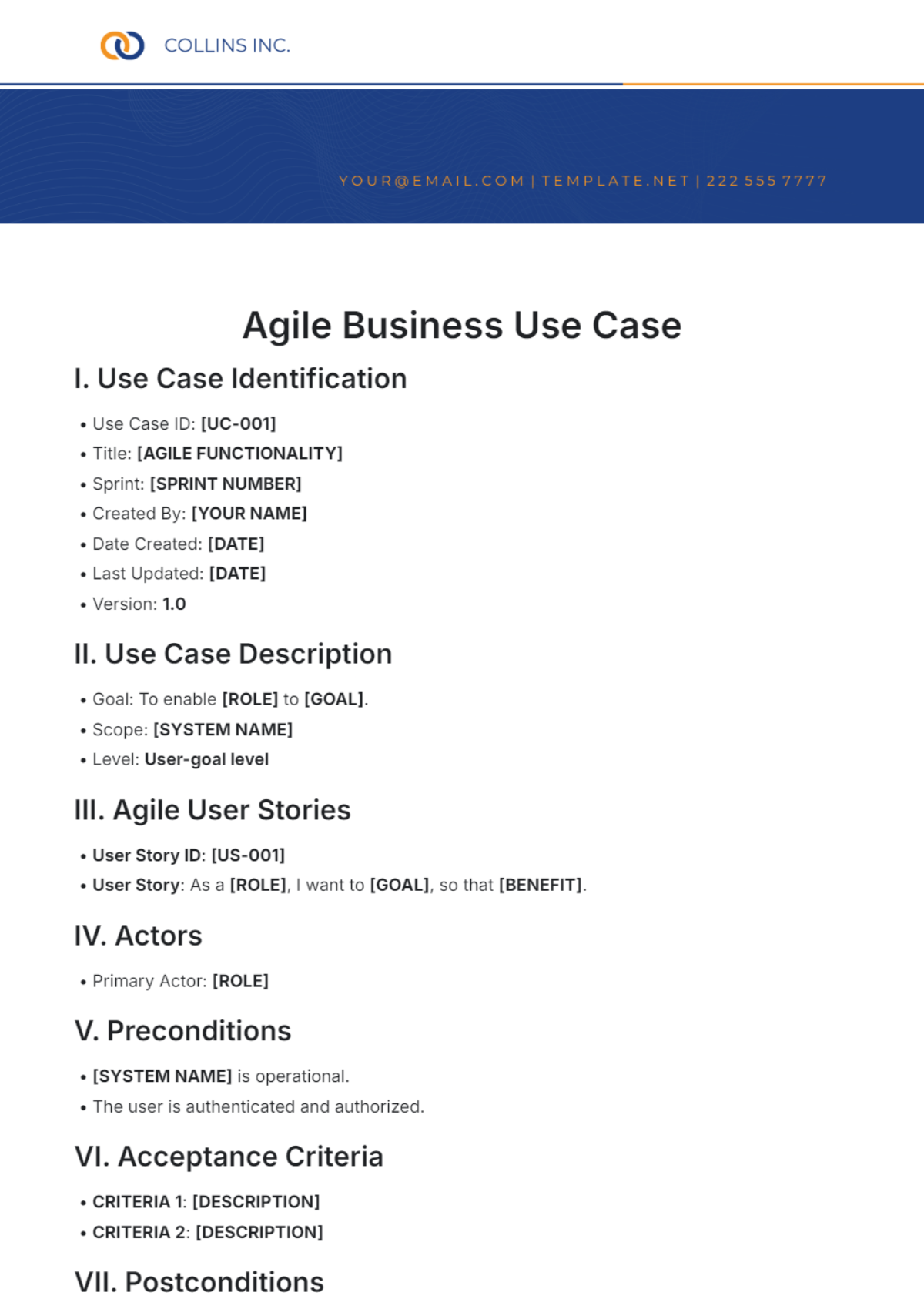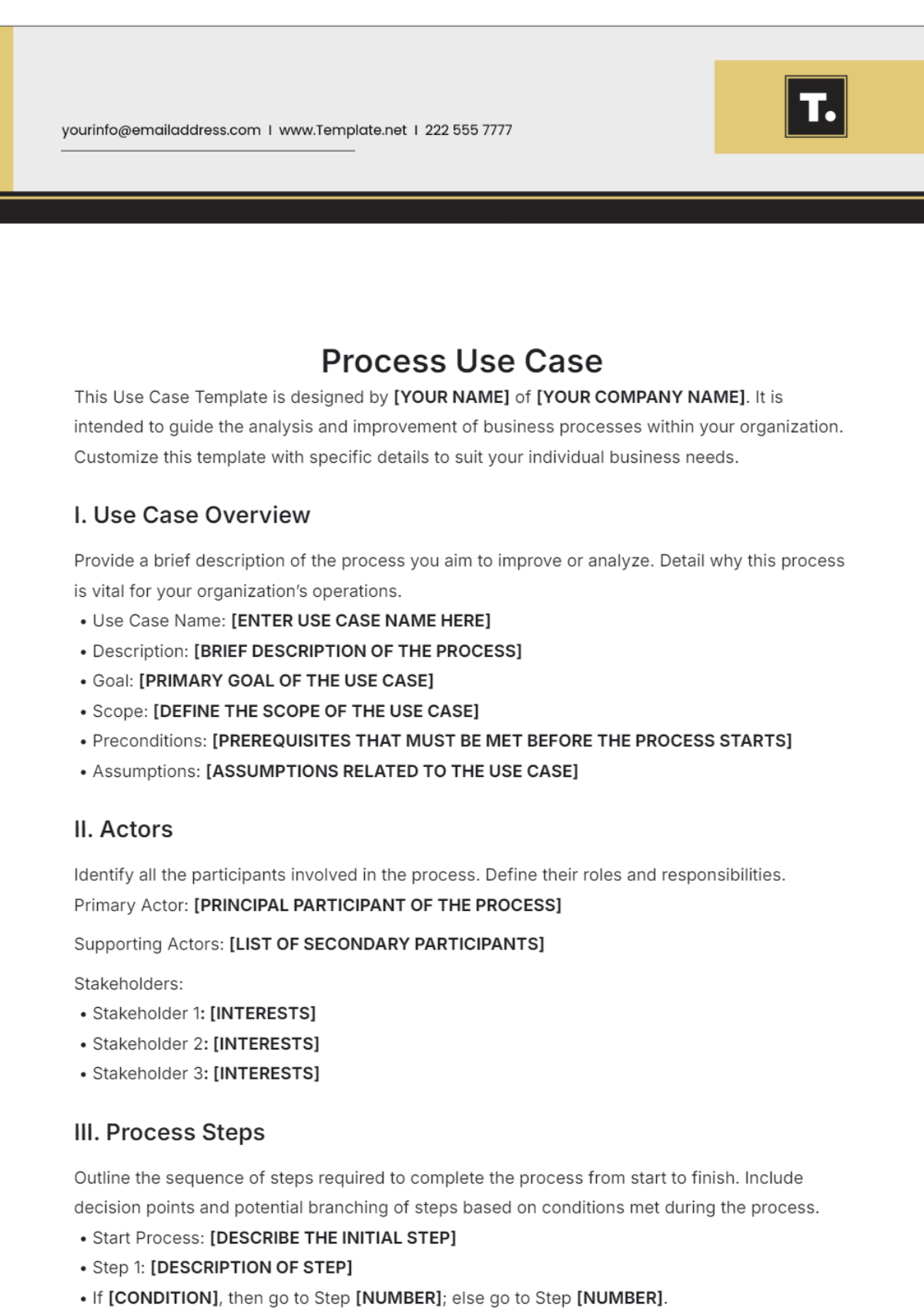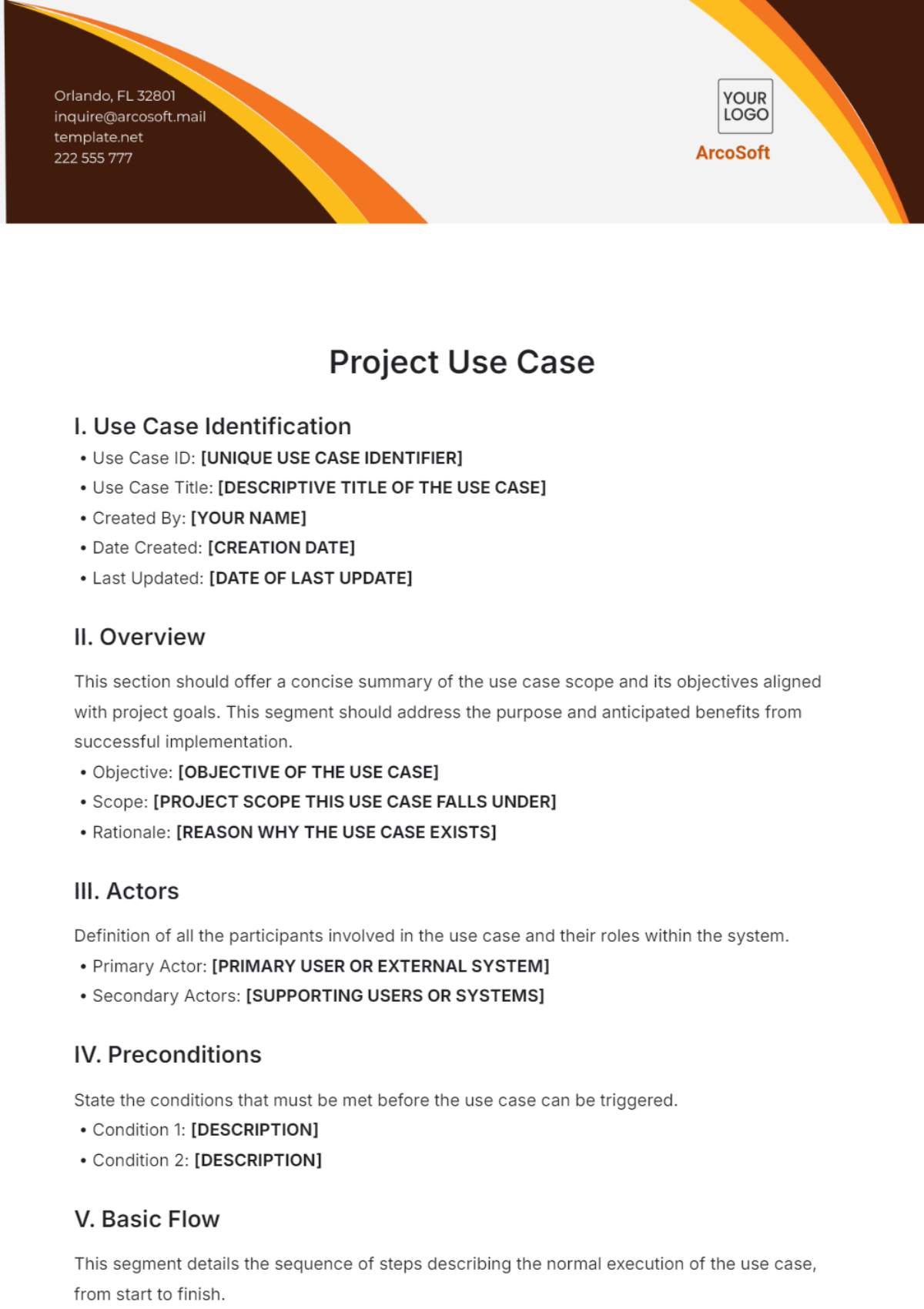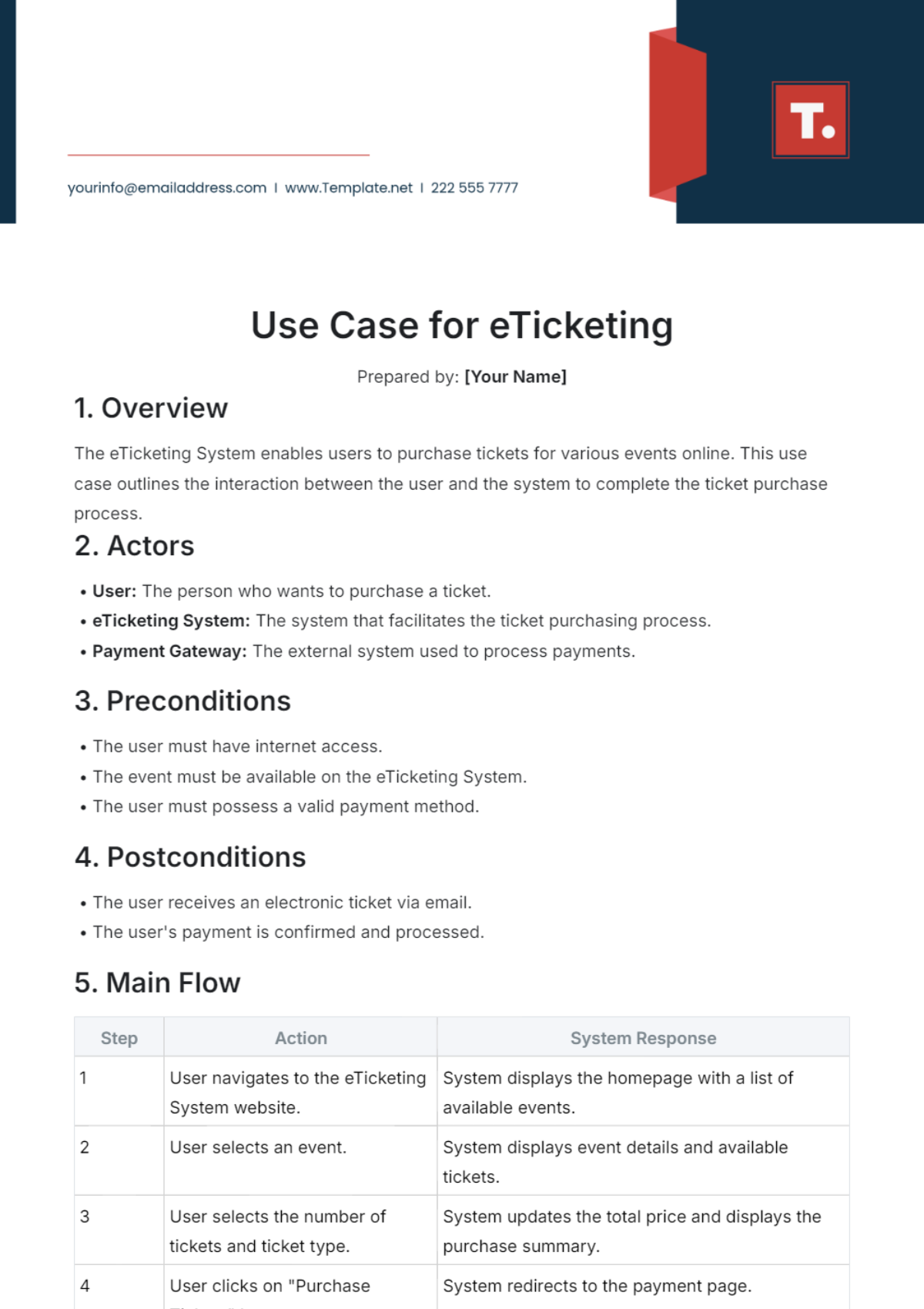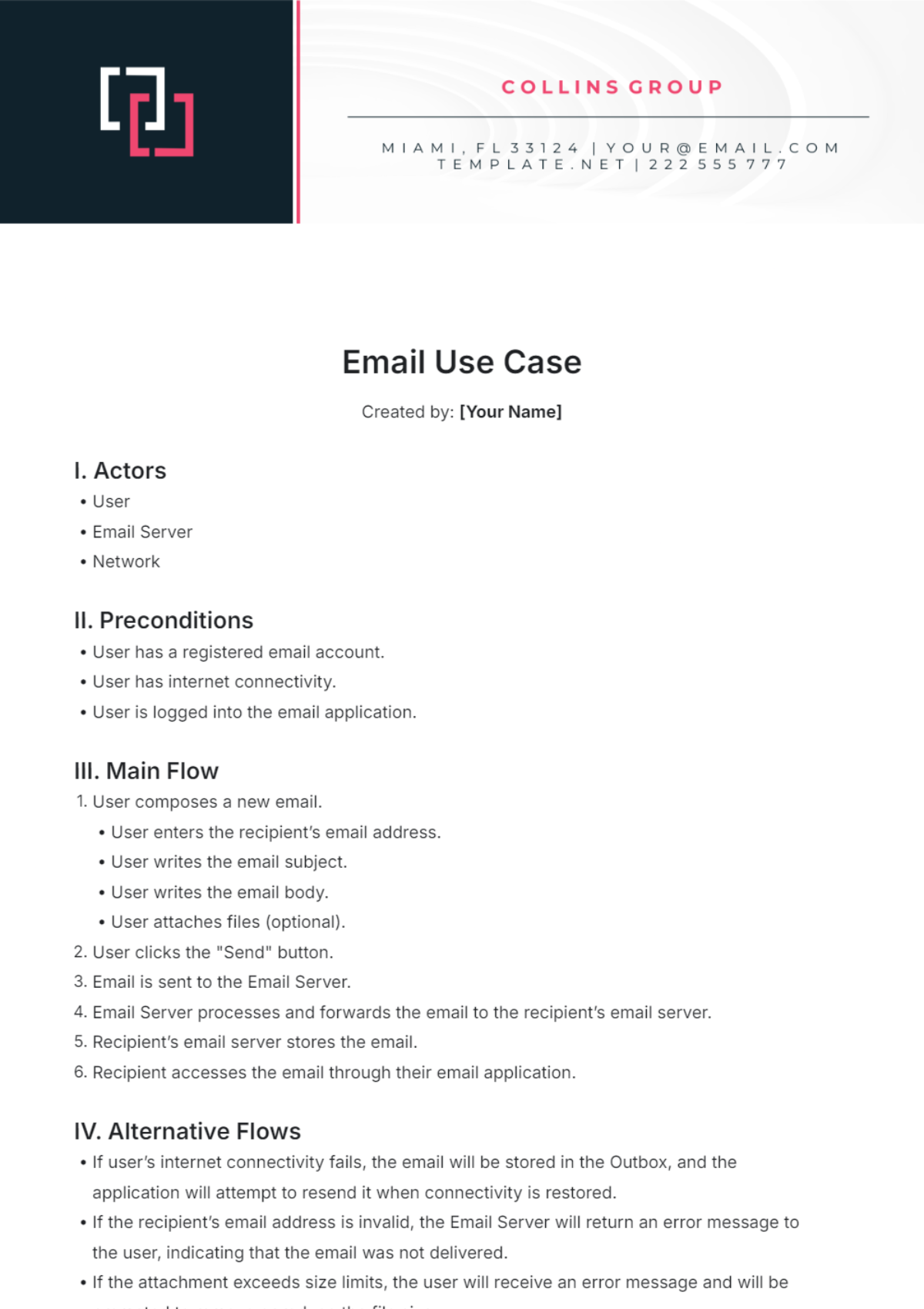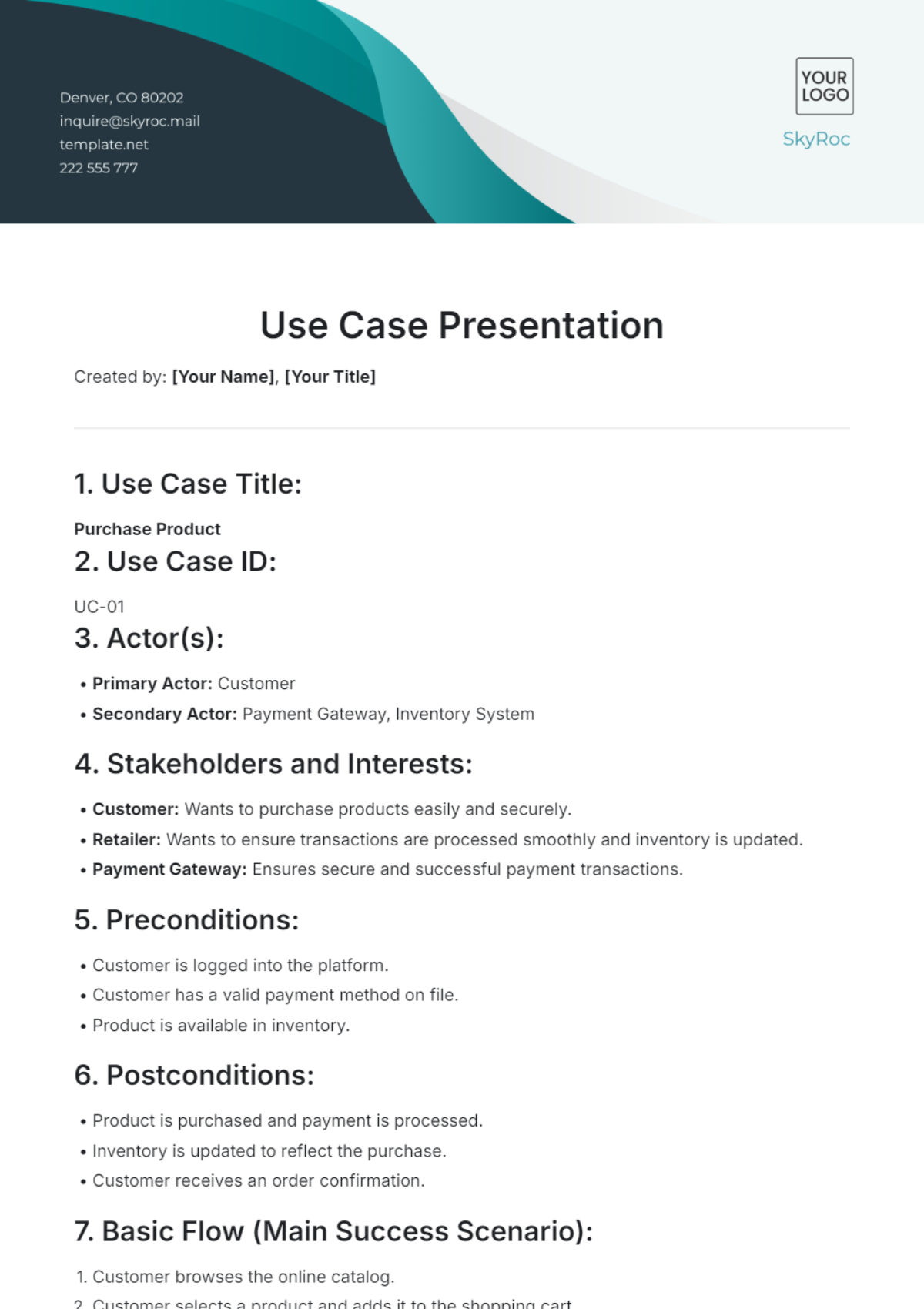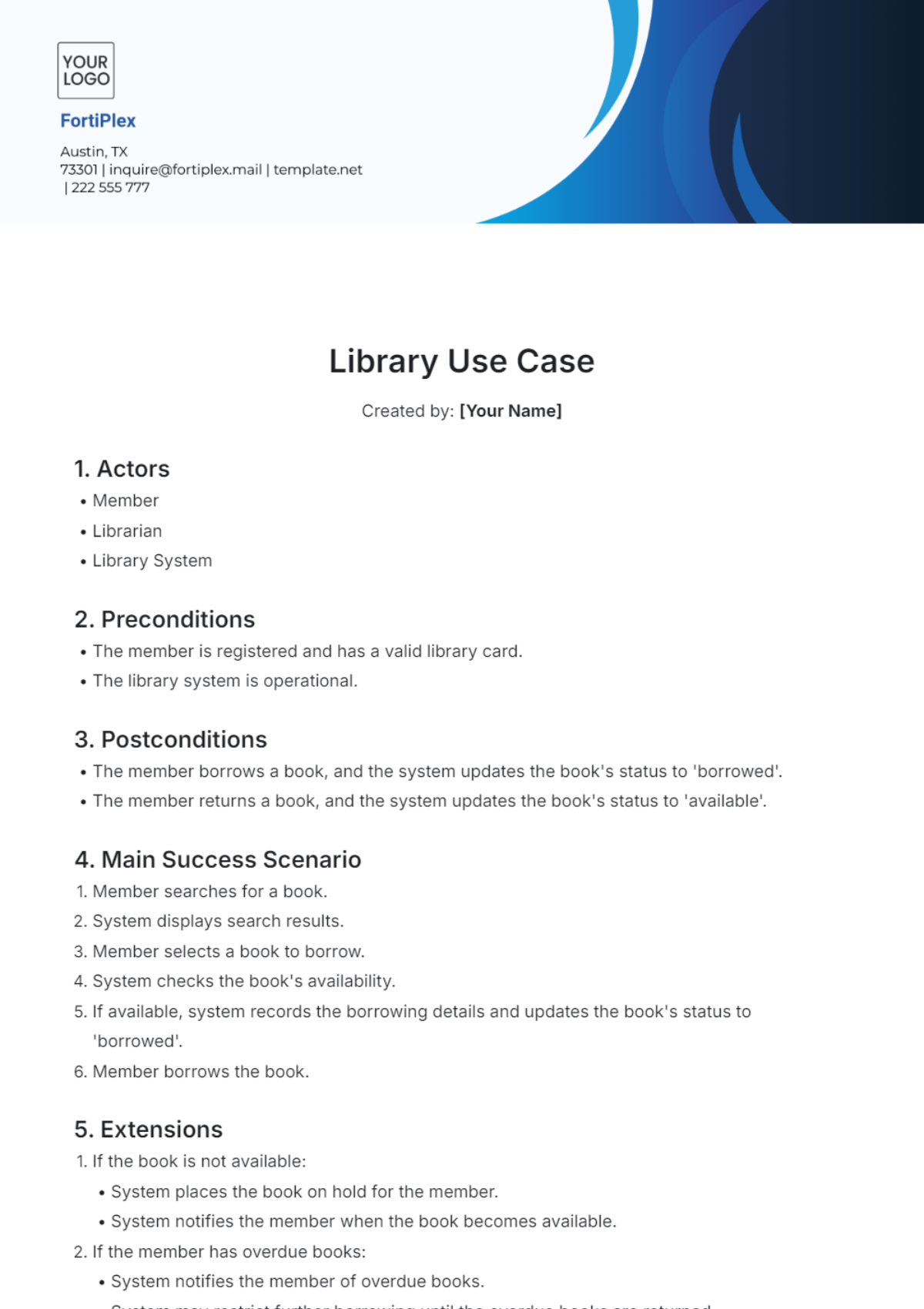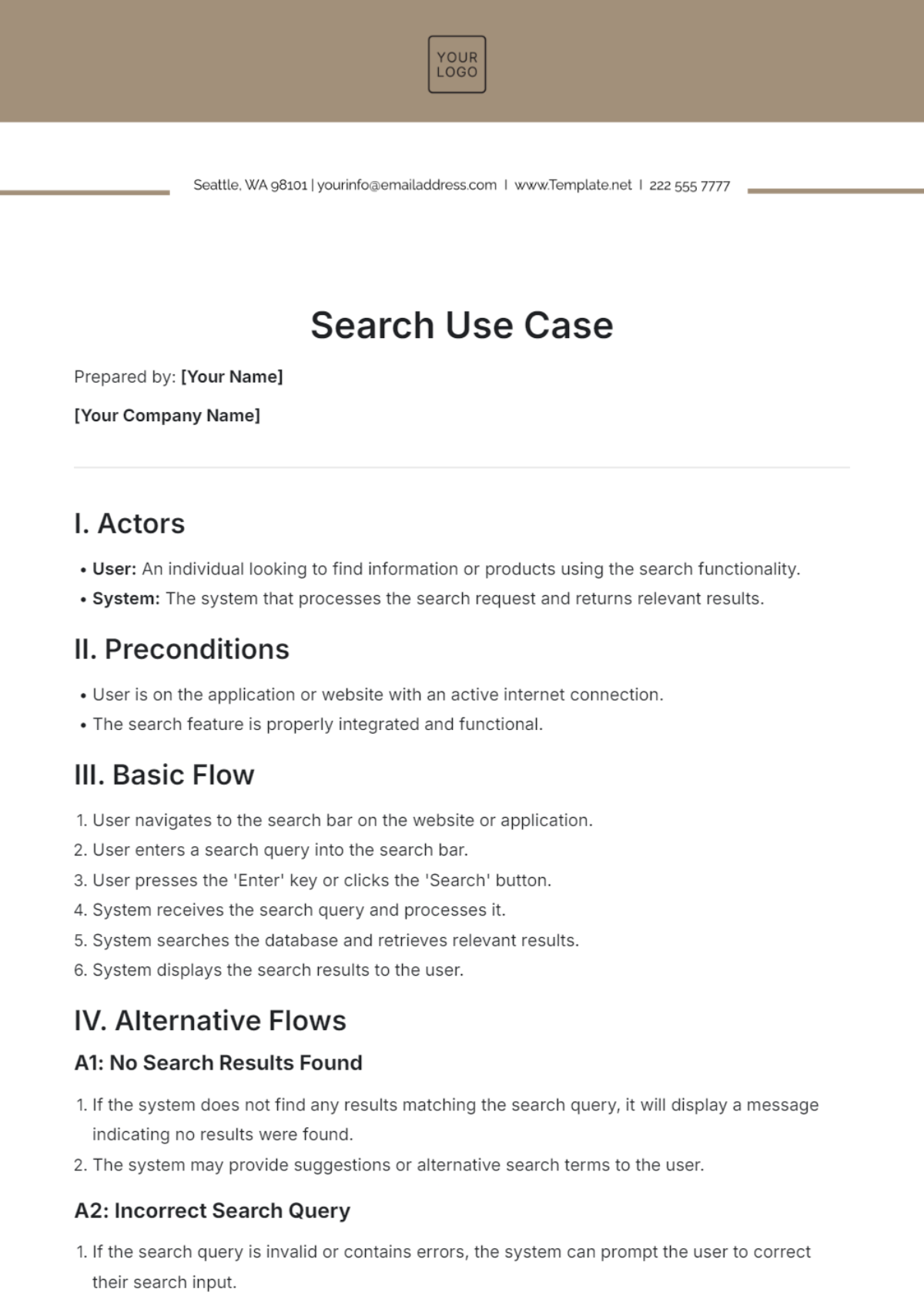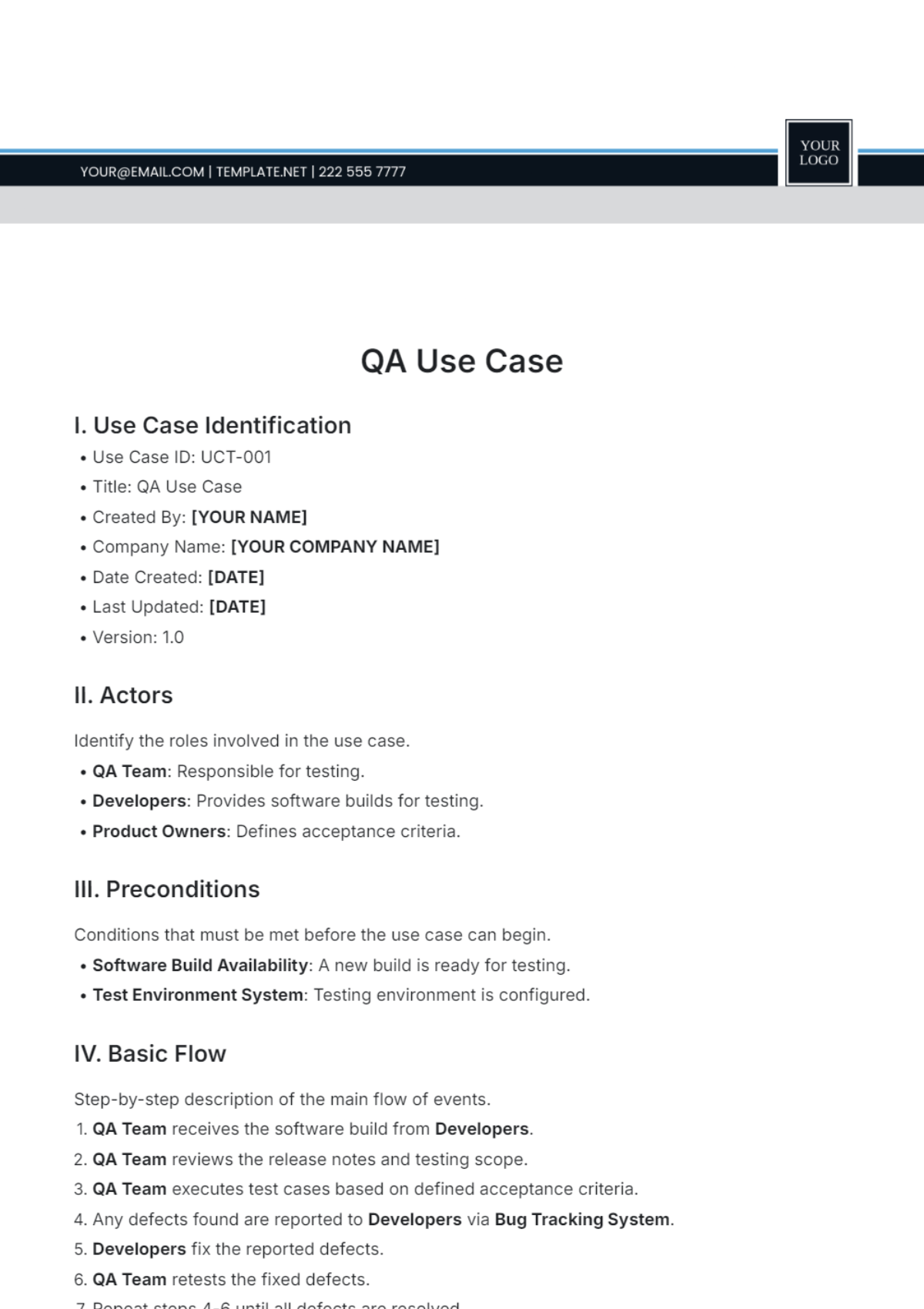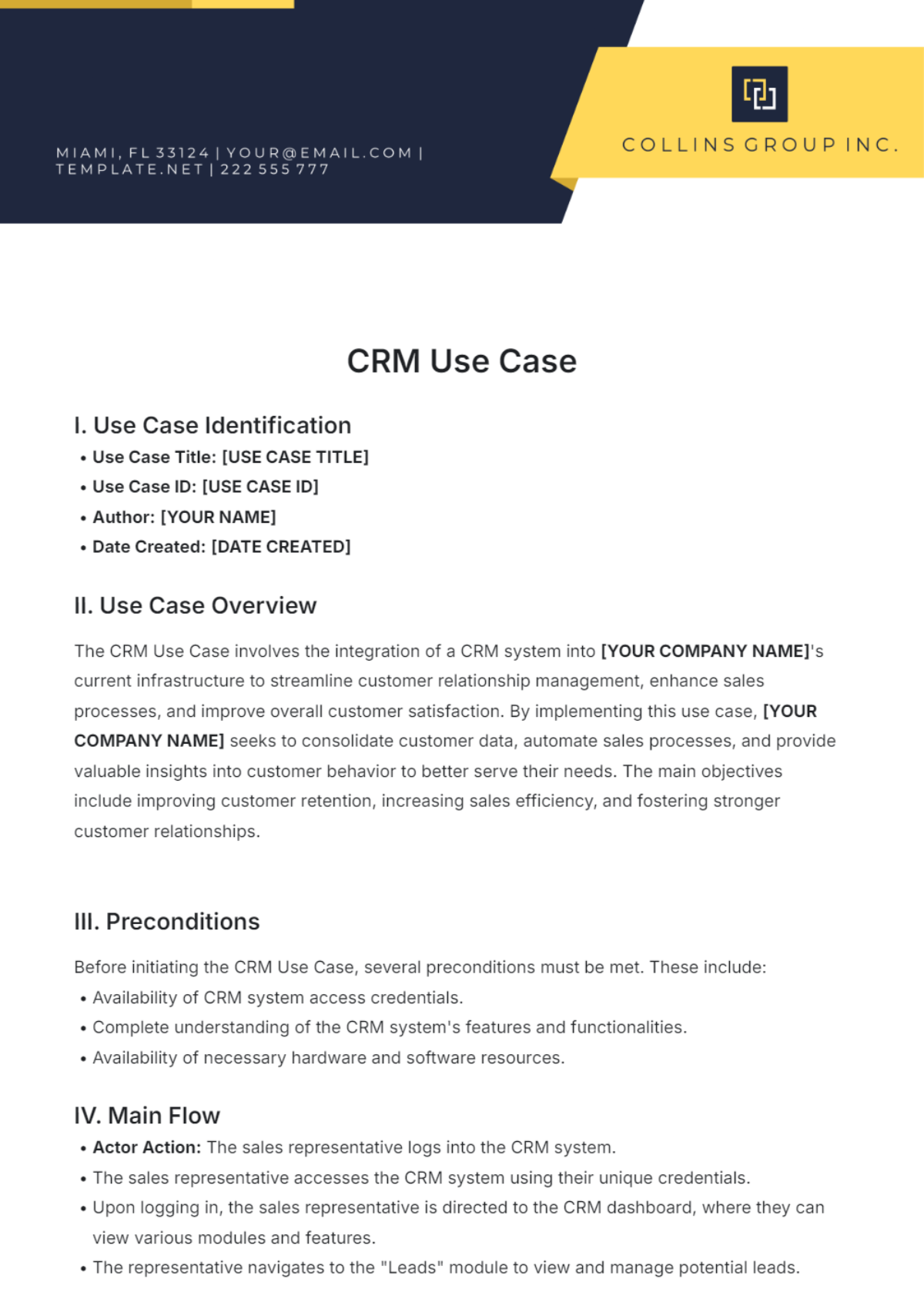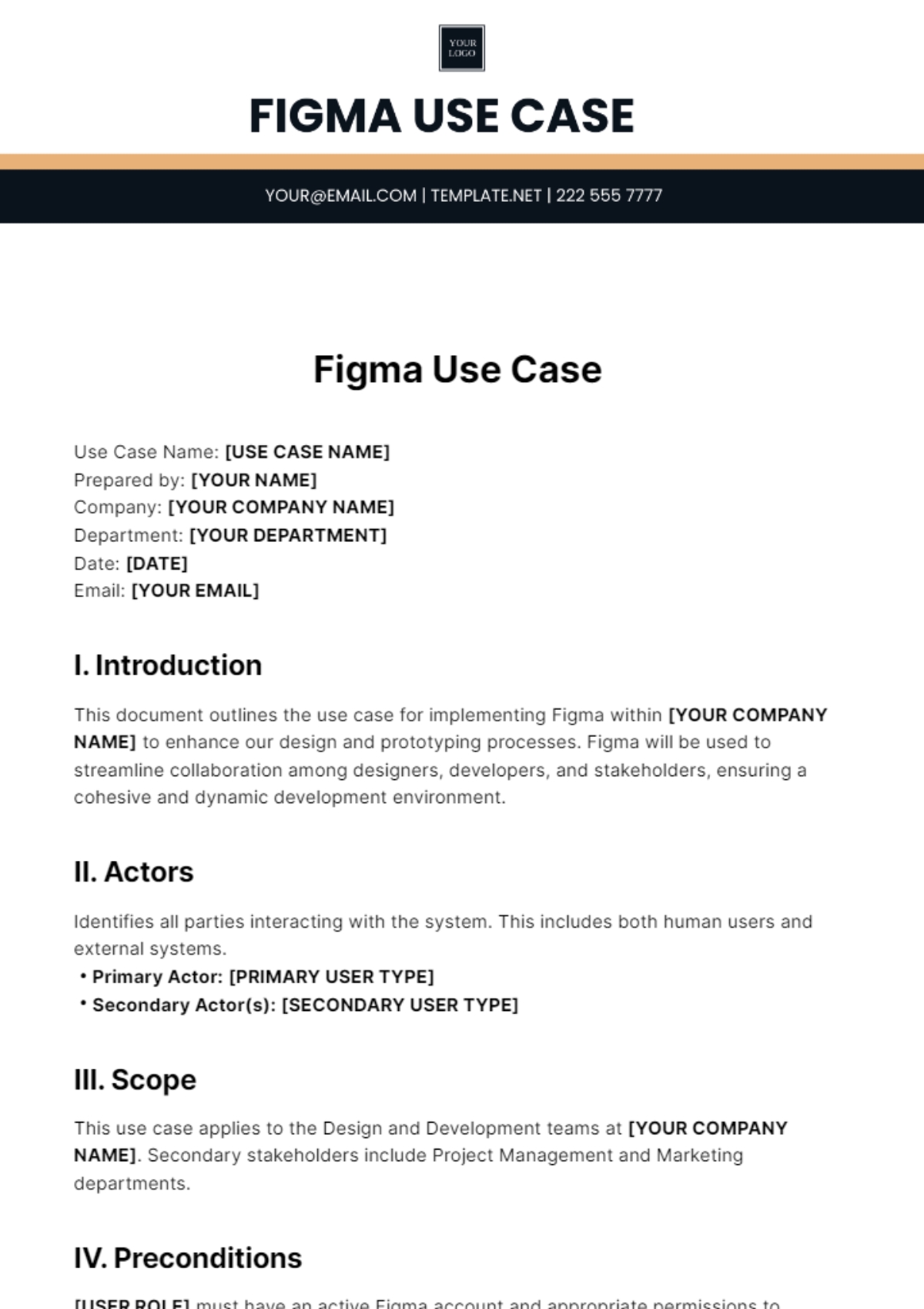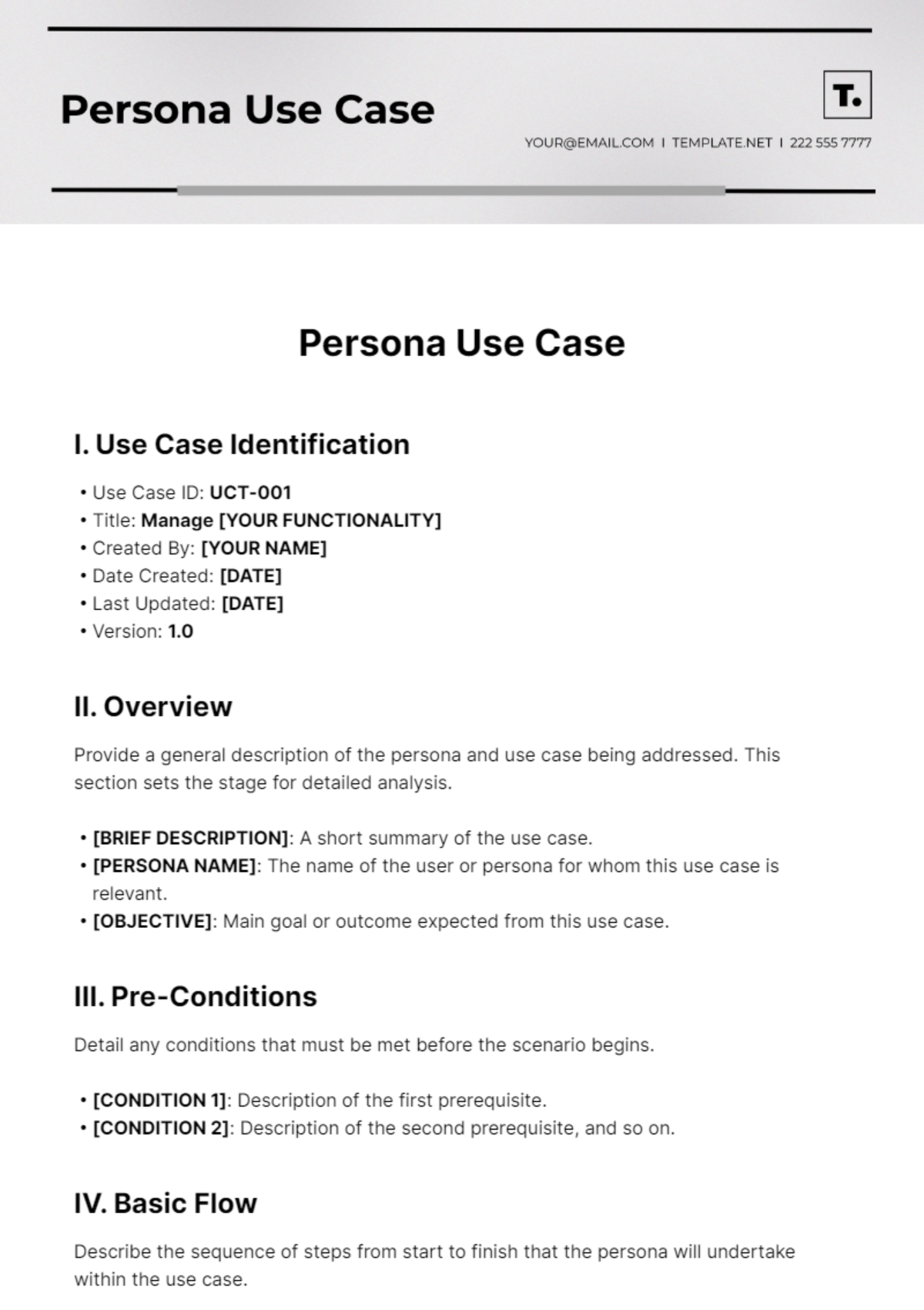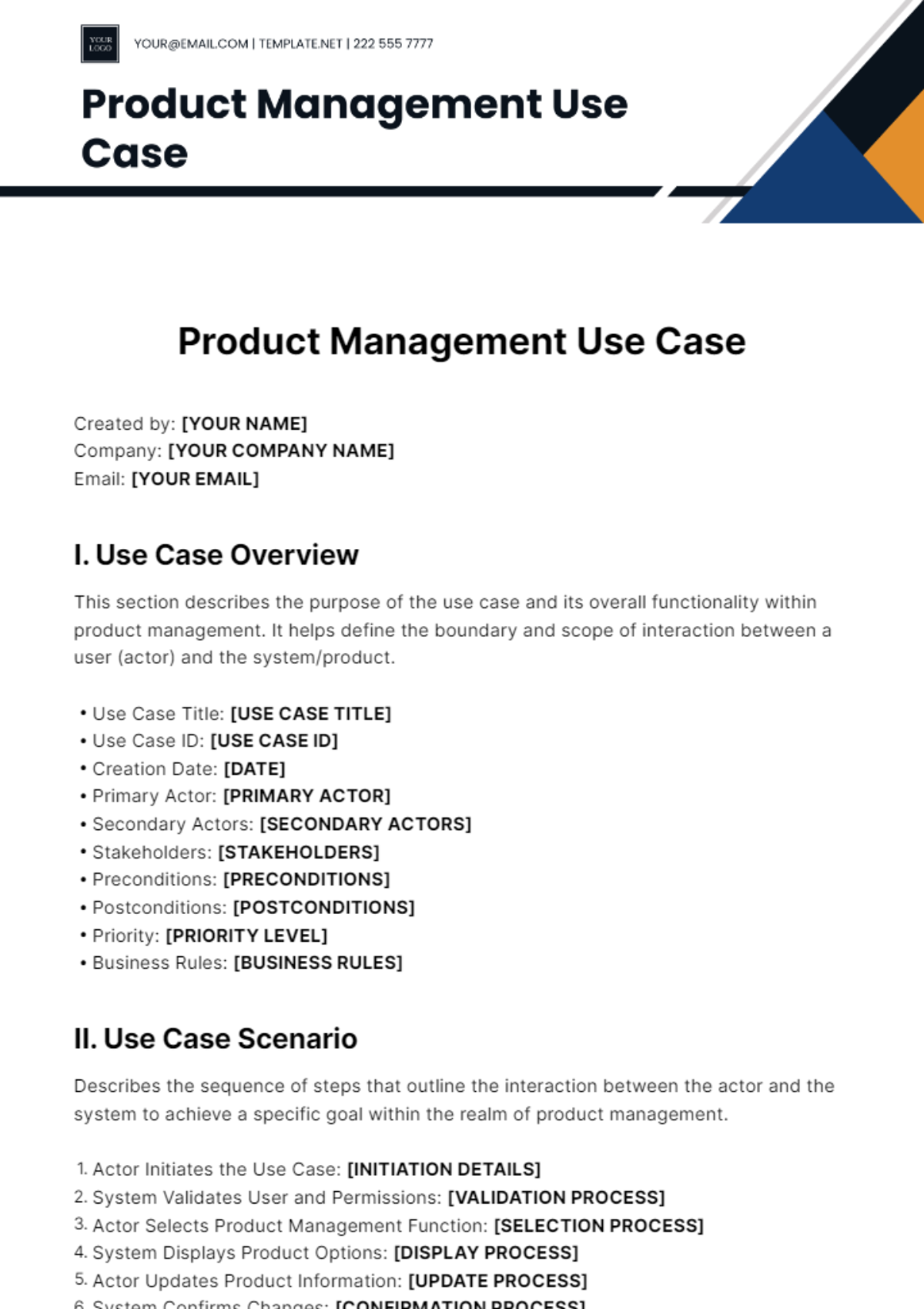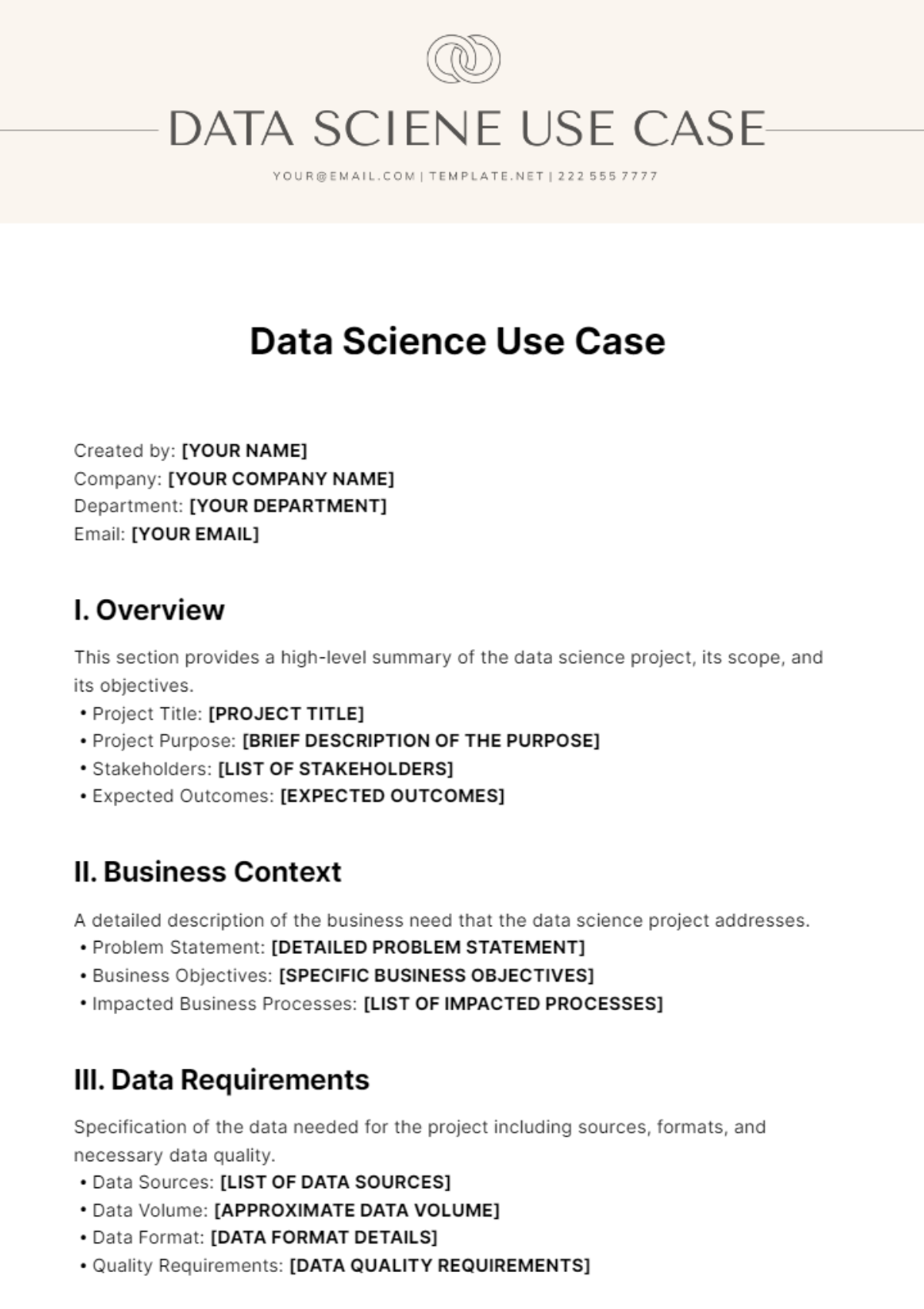Use Case for Product Development
Prepared by: [Your Name]
1. Overview
This use case details the process for developing a new product from its initial concept through to its final release. It is designed to ensure that the product is developed efficiently, meets market demands, and is delivered on time and within budget. The process involves multiple stakeholders, including product managers, designers, developers, quality assurance teams, and marketing professionals.
2. Actors
Product Manager: Oversees the product development process, coordinates between teams, and ensures that the product aligns with market needs and business goals.
Designer: Creates the visual and functional design of the product, including prototypes and user interfaces.
Developer: Implements the product based on the design specifications, coding, and integrating functionalities.
Quality Assurance (QA) Tester: Tests the product to identify and report any issues or defects, ensuring the product meets quality standards.
Marketing Team: Develops and executes strategies to promote the product, prepares launch materials, and manages market communications.
Customer: The end-user of the product whose feedback and needs drive the development and refinement of the product.
3. Preconditions
Market Research: Comprehensive research has been completed to understand market demands, customer needs, and competitive landscape.
Budget Allocation: Financial resources have been allocated for the product development, including costs for design, development, testing, and marketing.
Development Team Assembly: The necessary team members, including designers, developers, and QA testers, are in place and ready to start the project.
4. Main Flow
Step | Description | Actor |
|---|---|---|
1. Concept Generation | Identify and define the product concept based on market research and business needs. | Product Manager |
2. Design and Prototyping | Create detailed designs and prototypes of the product to visualize and test concepts. | Designer |
3. Development | Build the product according to design specifications, including coding and integration. | Developer |
4. Testing | Test the product to ensure it meets quality standards and functions as intended. | QA Tester |
5. Marketing and Launch | Prepare and execute marketing strategies, launch the product, and manage public relations. | Marketing Team |
5. Alternative Flow
If Testing Reveals Significant Issues:
The product is sent back to the development phase for necessary revisions.
Steps 3 (Development) and 4 (Testing) are repeated until the product meets quality standards and passes all testing criteria.
6. Postconditions
Product Launch: The product is officially released to the market.
Marketing Campaigns: Marketing activities are underway to promote the product and drive adoption.
Customer Feedback: Feedback from customers is gathered and analyzed to inform future improvements and iterations.
7. Success Criteria
Quality Standards: The product meets predefined quality criteria and is free of critical defects.
On-Time and Within Budget: The product is delivered according to the project schedule and within the allocated budget.
Positive Customer Feedback: Customers provide favorable feedback, indicating that the product meets or exceeds their expectations.
